

The Marine Insurer
NEWS & ANALYSIS IN THE MARINE MARKETS
Lossprevention remainskeyfocusin marinesector
Geopolitics: The world remains an uncertain place
l Tariffs: Impacting the ability to do business
l Climate change: Marine market adapting to risks
l Middle East: Safe havens emerging
l Sanctions: Difficulties in supporting valid claims
l Piracy: Surge in Asian water attacks

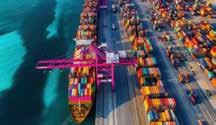

The real cost of tariffs and sanctions
After the best part of a year of fast-moving tariffs and continued sanctions, the true cost of those political decisions is being felt across the world and throughout the marine insurance sector.
Rapidly rising costs and uninsured elements of policies are adding up to a tariff nightmare for many who are faced with enormous price rises to add to an already expensive post-Covid world.
And then there is the human cost – the people whose valid claims are being caught up in sanctions, leaving widows without compensation after the death of husbands on the high seas. From both an ethical and an accounting perspective such stories are costing the industry dearly.
Reputation is a fragile thing and such stories only serve to damage the sector as insureds who thought their claims would be paid in full realise that the tariff element has been excluded, or the widow is left struggling to cope blame the insurance company for their woes.
The marine industry can be slow in reacting to such situations and, as a result, can unfairly take the blame. So, it is good to see more climate change-related legislation coming into force that hopefully will serve to improve the sector’s reputation in one vital area.
Meanwhile, reputations aside the marine insurance industry continues to pay out claims emanating from geopolitical risks, such as the war in Ukraine, the Red Sea and beyond.
They say that “no news is good news” but perhaps it is time for the sector to stand up and start trumpeting its successes, instead of quietly absorbing the criticism?
It’s a really packed issue this month so I hope that you find time to settle back and enjoy the read.
Liz Booth, Editor, The Marine Insurer
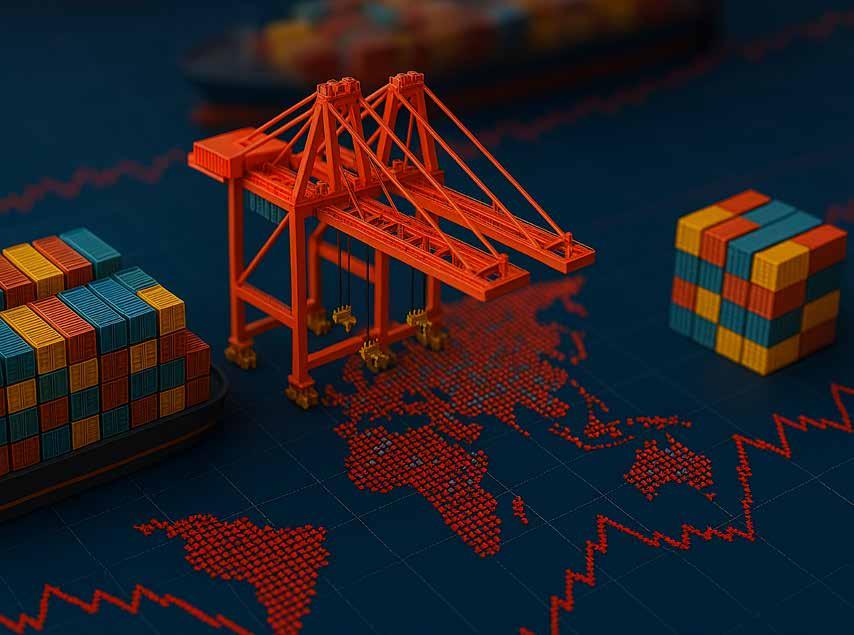
Loss prevention must remain key focus in maritime sector

Every year, marine insurer Allianz Commercial produces an analysis of total losses and incidents in shipping in its annual Safety and Shipping Review. Global head of marine risk consulting, Captain Rahul Khanna highlights some of the key insights from the 2025 edition
Given that as much as 90% of international trade is transported across oceans, maritime safety is critical, with the shipping industry making significant improvements in recent years. During the 1990s, the global fleet lost 200+ vessels a year. This total had halved by 10 years ago and is now down to a record low of 27 as of the end of 2024.
This compares with 35 a year earlier (vessels over 100 gross tonnage [GT]), down by around 20%, with a 75% decline in total losses reported in the past decade (105 in 2015).
The South China, Indochina, Indonesia and the Philippines region is the main loss hotspot globally in the past year, together with the British Isles and the East Mediterranean and Black Sea (four total losses each), and in the past decade (169).
A huge volume of imports and exports flow through the region, resulting in high levels of shipping traffic, which is reflected in the number of incidents. Overall, the past decade has seen 681 total losses reported across the shipping world.
Fishing vessels accounted for close to 40% of lost vessels during 2024 (10), followed by cargo (6) and chemical/ product vessels (3). Foundered (sunk) was the main cause of total loss across all vessel types (12), accounting for close to 50%. Fire/ explosion ranked second (7), remaining stable with fishing vessels the main casualties. More than 100 total losses of vessels have been caused by fires in the past decade.
The number of reported shipping casualties or incidents around the world actually increased by around 10% during 2024 (3,310 compared to 2,963). The British Isles saw the highest number (799), followed by the East Mediterranean
TOTAL
LOSSES BY YEAR
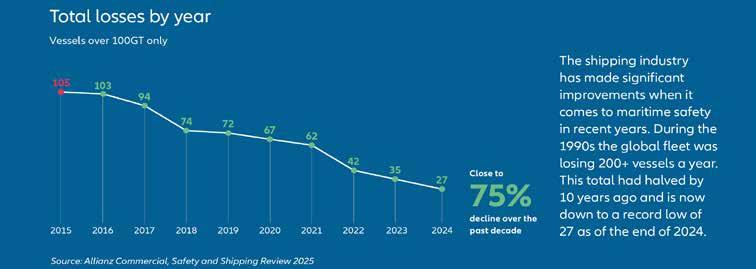
and Black Sea (694).
The British Isles is also the top location for the most incidents in the past decade (5,613), accounting for 20% of 28,331 reported incidents. Machinery damage/ failure accounted for more than half of all shipping incidents globally (1,860) in 2024, followed by vessel collision (251) and fire/explosion (250).
Despite the ongoing trend for fewer large losses, challenges remain. Shipowners are trying to operate vessels safely within an ever-changing and dynamic regulatory framework and do the right thing, but this is becoming more difficult, given they have to manage a host of complex issues from conflicts, sanctions and tariffs, to the risks posed by the shadow fleet, to the emerging challenges that decarbonisation brings.
The relevance of political risk and conflict as a potential cause of maritime loss is increasing with heightened geopolitical tensions.
Partial and attritional losses remain a major concern and although the industry has made progress on the risks associated with large vessels, this does not mean they are all under control. Fires, collisions and groundings continue to occur due to a lack of mitigation and understanding of risk.
Loss prevention and risk mitigation practices and processes must filter down to the grass roots. Ensuring safety will continue to require a significant effort across the industry.
The annual report identifies loss trends and highlights risk challenges for the maritime sector. Here are four interesting takeaways from the report:
> The industry faces an increasingly volatile and complex operating environment, marked by attacks against shipping, vessel detentions, sanctions, as well as the fall-out from incidents involving damage to critical sub-sea cables. Furthermore, the ripple effect of increasing protectionism and tariffs threatens to remake supply chains and shake up established trade relations;
> While the claims environment was moderate last year, large vessel fires remain a concern. The number of incidents
overall increased during 2024 to a decade high of 250 across all vessel types, our analysis shows, up by 20% year-on-year. Around 30% of these incidents occurred on either container, cargo or roll-on roll-off vessels (ro-ros) (69).
> Allision incidents such as the container ship Dali and the Francis Scott Key Bridge in Baltimore last year, and the incident with a navy vessel and the Brookyln Bridge in May 2025, generated news headlines around the world. Our analysis shows there were close to 200 incidents (184) of vessels hitting port or harbour infrastructure last year, the fifth most frequent cause of shipping incidents around the world, behind machinery damage/failure, collision (involving vessels), fire, explosion and wrecked/stranded (grounded).
> The so-called “shadow fleet”, vessels engaged in illegal oil trades and also linked to sabotage incidents, has grown in size since the war in Ukraine commenced, posing a serious threat to maritime safety. There have already been many fire, collision and oil spill incidents involving these vessels. Clean-up costs for an oil spill could be in excess of US$1bn, depending on location.
“The number of reported shipping casualties or incidents around the world actually increased by around 10% during 2024 (3,310 compared to 2,963). The British Isles saw the highest number (799), followed by the East Mediterranean and Black Sea (694).”
Innovation needed for emerging risks

George Jones, global sales leader, marine, cargo & logistics, Marsh, explains how insurance innovation is unlocking opportunities in marine, cargo
and logistics
Global trade uncertainty and supply chain risk — driven by geopolitical instability, climate change, and shifting trade policies — present challenges to cargo owners and supply chain operators.
According to the Global Risks Report 2025, these challenges are top of mind among decisionmakers given their potential impact on trade, supply chains, product distribution, critical national infrastructure, food and energy security and, ultimately, companies’ sales, reputation, profitability and even survival.
As a critical link in global supply chains, the maritime sector’s response to these challenges is of broad importance.
More recently, tariffs have introduced further complexity to the trade landscape, with significant implications for cargo owners and supply chain operators.
These challenges are forcing the marine insurance industry to refocus on innovation and improve solutions, enabling it to stay ahead of trends, manage risks effectively and seek new opportunities for clients.
TIME IS EVERYTHING
In today’s fast-paced and interconnected economy, timely delivery of goods is essential for operational efficiency.
Delayed cargo shipments - whether due to severe weather events, operational disruptions, or increased tariff or sanctions compliance - can have far-reaching implications on operations, reputations, and finances.
While traditional cargo insurance policies typically cover physical loss or damage to goods, they often exclude expenses directly related to delays.
To address this, cargo owners and supply chain operators are increasingly seeking out innovative insurance products.
One option is parametric insurance, which provides predetermined payouts when specific events occur, such as adverse weather conditions or vessel performance issues.
Despite heavy reliance on key routes for the transportation of goods, limited redundancy exists in the maritime industry.

Many of the world’s busiest ports rely on inland waterway navigation for accessibility, including five of the biggest seaports in Europe.
Inland waterways are particularly vulnerable to the effects of climate change, with the potential for trade to be significantly curtailed if there is insufficient water for the draft of a laden vessel.
When the load factor of multiple vessels is reduced in periods of low water, the costs per ton of transported goods increases. During Europe’s drought in 2022, low water levels in the Rhine River led to a 75% reduction in cargo capacity on some vessels.
Many waterways rely on locks to facilitate the successful passage of vessels. During high water levels, locks may face operational restrictions or closure. During extremely low water levels, there may be limited water available to fill the locks. The Panama Canal has experienced the effects of this, with some vessels reportedly paying $2.4m to skip queues caused by low water levels.
The Mississippi river which is fundamental for ensuring global food accessibility: up to 60% of US grain exports and 78% of the world’s exports of feed grains pass through the river, is only navigable for vessels when water levels exceed nine feet. Extended droughts and flooding can shut down the channel for days or more, leading to delays, loss of perishable goods and disruption.
A parametric policy potentially could be structured around the depth of a river or a canal, triggering a payout if levels drop below or rise above a certain height.
Parametric insurance is gaining traction due to advances in technology and data analytics that enable more precise and rapid
“Parametric insurance is gaining traction due to advances in technology and data analytics that enable more precise and rapid risk underwriting for shipowners, operators and port terminals.”

risk underwriting for shipowners, operators and port terminals. Marsh works with technology providers that can evaluate voyage exposure to delay, which can then support the development of parametric solutions for our clients.
CHARTING NEW COURSES
Economic trade shifts and climate change are forcing (or enabling) many operators to explore alternative shipping routes. This requires adaptations in ports and supply chain infrastructure to support these routes.
For instance, while newer routes, such as the Northern Sea Route, offer potential, they can be hindered by inadequate infrastructure and unsuitable ports.
Increased accumulation in warehouses, ports and distribution centres can create significant bottlenecks that cause disruption. The growing size of vessels and water levels can also heighten the risk of port blockages.
Port landlords typically purchase property insurance, while operators tend to purchase both property and liability coverage. Recent innovations include the introduction of port blockage insurance, which is designed to cover losses from blockages, and port trade disruption insurance, which is designed to address a range of perils that might interrupt cargo flow, such as the impact of geopolitical events or weather-related incidents. These policies are designed specifically for port owners and operators, not cargo owners.
ENHANCING PRODUCT SUITES
Logistics companies generally purchase property and liability insurance to protect against claims made by customers or third
parties regarding lost or damaged cargo.
As these companies expand their service offerings to generate additional revenue streams, they may want to consider shippers’ interest policies to extend cargo coverage to their customers. These products can offer cost-effective cargo coverage for small consignors due to the bulk purchasing of the logistics provider.
Larger cargo-owning companies with extensive transit and storage volumes may prefer to negotiate stock throughput coverage to protect their operations throughout the supply chain.
STRENGTHENING THE SUPPLY CHAIN
Maritime supply chains face other threats — labour strikes, cyberattacks and workforce issues — that can disrupt operations and create ripple effects throughout the global economy.
For example, potential US port fees on China-built ships could limit the availability of ships needed to move agriculture, energy, mining, construction and manufactured goods around the world.
Considering the potential widespread impacts of supply chain disruption, it is important for marine, cargo and logistics operators to understand the challenges they face and identify vulnerabilities in their operations. This understanding can inform a comprehensive risk management and insurance strategy to enhance resilience.
Proprietary systems such as Sentrisk and BrokerSafe can analyse supply chain risks and assess trucking carrier safety records. Sentrisk identifies potential choke points and reputational risks, while BrokerSafe helps cargo owners and freight brokers evaluate carrier safety in trucking fleets. Knowledge and data are powerful enablers that can facilitate better assessment of exposures and risks. These tools are part of Marsh McLennan’s broader effort to provide comprehensive risk management solutions to clients.
MANAGEMENT, MITIGATION, AND INSURANCE
As businesses adapt to shifting trade policies, staying informed about evolving risks and reviewing insurance strategies is becoming increasingly important. Marsh solutions can empower organisations with the knowledge and insights needed to enhance their board-level and real-time decisions.
For instance, Sentrisk, draws on data to help companies proactively manage current and emerging supply chain risks; consulting teams can support companies’ resiliency building and risk mitigation efforts; and brokerage and claims teams transfer risks via insurance and assist in claims recovery in the event of a loss.
Insurance and risk management strategies underpin global supply chains and it is essential that you understand the unique risks you face and the offerings available. Marine, cargo and logistics teams can draw on their expertise and experience to help cargo owners, ports and terminals, shipping and logistics companies adapt and thrive in this evolving landscape.
Coverage clarity is financial clarity

Rob Prichard , claim specialty practice leader-energy/marine IMA Corp, argues that the rise of tariffs has a material impact on cargo insurance and the duties clause becomes a strategic imperative for executives and insurance buyers
In today’s global trade environment, US tariffs have evolved from a policy lever into a material financial exposure. For companies importing goods into the US, duties and tariffs can inflate shipment values by millions of dollars annually. Yet many cargo insurance programmes fail to account for these costs adequately, leaving organisations exposed to unrecoverable losses when claims arise.
At the center of this matter lies a deceptively simple provision: the duties clause in cargo insurance policies. Often overlooked, this clause determines whether duties, tariffs and taxes are included in the insured value of goods.
For CFOs, risk managers and strategic insurance buyers, understanding and negotiating this clause is essential to protecting the balance sheet and ensuring claims recoveries reflect the actual cost of loss.
A DECADE OF DISRUPTION
In the past 10 years, US trade policy has shifted from relative stability to aggressive interventionism. Tariffs, once used primarily for targeted protection, have become central to economic and geopolitical strategy.
From 2015 to 2024, successive administrations imposed a series of tariffs on imports from key trading partners, including China, Mexico, Canada and the European Union. These duties, typically ranging from 10% to 25%, were tied to disputes over intellectual property, trade imbalances and national security.
This trend has accelerated since President Trump returned to office in January 2025. Tariffs are now deployed as strategic tools under the International Emergency Economic Powers Act (IEEPA), with national emergencies declared in response to drug trafficking, illegal immigration and trade deficits.
These declarations have enabled sweeping “Liberation Day” tariffs; blanket levies on nearly all imports, with rates ranging from 10% to 50% depending on origin and product category. The impact has been profound:


•Tariff revenue has surged, with more than $158bn collected since January 2025;
•Importers face rising landed costs, often absorbing duties or passing them on to consumers;
•Inflationary pressures have intensified, particularly in electronics, automotive parts and consumer goods; and,
•Legal challenges are mounting, with a pending Supreme Court case expected to determine the scope of presidential authority under IEEPA.
For insurance buyers, this evolving tariff regime introduces a new layer of complexity. Duties that were once predictable and modest are now volatile, substantial, and politically driven; often representing 20% to 30% of shipment value. Without proactive adjustments to insured values and clear policy language, companies risk significant shortfalls in the event of a cargo loss.
ENTER THE DUTIES CLAUSE
Cargo insurance policies typically include language such as:
“This insurance covers the insured value of goods including freight, duties and taxes, as declared at the time of shipment, unless otherwise excluded.”
However, this clause is not standardised. Key variables include:
• Declared value: Duties must often be explicitly included in the declared value. If omitted, they may not be recoverable even if the clause appears to allow it.
• Policy endorsements: Some insurers require specific endorsements to cover duties and tariffs. Without them, coverage may default to excluding these costs; and,
• Valuation basis: Policies written on CIF (cost, insurance, freight) terms do not automatically include duties unless negotiated.
This ambiguity can lead to disputes during claims, especially when duties represent a substantial portion of the
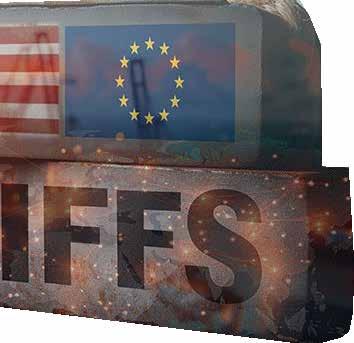
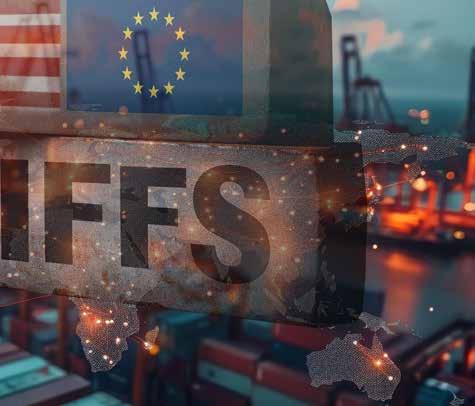
“Ambiguity can lead to disputes during claims, especially when duties represent a substantial portion of the shipment’s value. In today’s tariff-heavy environment, overlooking this clause can result in significant uninsured losses.”
shipment’s value. In today’s tariff-heavy environment, overlooking this clause can result in significant uninsured losses.
CLAIM SCENARIO: THE COST OF AMBIGUITY
Let’s examine a real-world example:
• A US-based electronics distributor imports $6.5m worth of goods from China;
• $1.5m of that value stems from recently imposed tariffs;
• The cargo policy was bound at $5m, excluding duties;
• During transit, the container is damaged in a port accident and declared a total loss;
• The insurer pays $5m, citing the declared value and policy terms; and,
• The importer absorbs a $1.5m uninsured loss.
This scenario is not hypothetical. It reflects a growing trend in claims disputes in which duties are excluded due to unclear policy language or insufficient declarations.
For executives, this is not just a coverage gap, but a balance sheet event with implications for financial reporting, shareholder value and procurement strategy.
STRATEGIC RECOMMENDATIONS
To mitigate exposure and ensure coverage alignment, marine insurers and buyers should consider the following:
1. Audit cargo policies thoroughly
Review policy language to confirm whether duties and tariffs are covered or excluded. Pay close attention to valuation clauses, declaration requirements and any exclusions that may apply. This audit should be part of the annual renewal process and revisited whenever trade policy shifts.
2. Align insured values with landed costs
Declared values should reflect the full financial exposure, including:
• Base cost of goods;
• Freight charges;
• Duties and tariffs; and,
• Taxes and surcharges.
This alignment is critical to securing full indemnity in the event of loss. Failure to include duties can result in significant underinsurance and unrecoverable costs.
3. Engage brokers and underwriters proactively
Don’t assume coverage. Confirm it. Work with brokers to:
• Negotiate clear policy language;
• Secure endorsements that explicitly include duties; and
• Validate valuation methodology with underwriters.
This proactive engagement can prevent disputes and streamline claims recovery.
4. Monitor trade policy shifts in real time
Establish internal protocols to track tariff changes and adjust insured values accordingly. Treat tariff volatility as a dynamic risk factor requiring ongoing attention. Communicate changes to insurance partners to ensure coverage remains aligned with exposure.
EXECUTIVE CONSIDERATIONS: BEYOND THE POLICY
For senior executives, the duties clause is part of a broader conversation about enterprise risk management. It intersects with:
• Procurement strategy: Tariff exposure may influence sourcing decisions and supplier negotiations;
• Financial planning: Uninsured duties can disrupt cash flow and impact quarterly earnings; and,
• Regulatory compliance: Accurate valuation and documentation are essential for customs and insurance audits.
Treating cargo insurance as a transactional purchase is no longer sufficient. It must be integrated into strategic planning, with clear ownership and accountability across finance, legal and risk functions.
FROM CLAUSE TO COVERAGE STRATEGY
In today’s trade environment, the duties clause is not a footnote; it is a financial safeguard. As tariffs continue to evolve, companies must ensure that their cargo insurance programmes reflect the full scope of their exposure. This means negotiating clear policy language, declaring accurate shipment values and engaging insurance partners with precision and foresight.
For executives and insurance buyers, the takeaway is clear: coverage clarity is financial clarity. By elevating the duties clause from operational detail to strategic priority, organisations can protect their assets, preserve margins and navigate global trade with confidence.


By Joe Kramek , president & CEO,
World Shipping Council, the liner shipping trade association with offices in Brussels, London, Singapore and Washington, D.C.
Shipboard fires remain one of the most significant concerns for both ocean carriers and the marine insurance sector. They are now at their highest level in more than a decade – with liner shipping experiencing a shipboard fire every 60 days. Recent events unfortunately continue to show the deadly and devastating effects of ship fires.
The common thread is mis-declared or undeclared dangerous goods, shipments that enter the supply chain incorrectly documented or concealed, bypassing the safeguards that protect crews and vessels.
Raising the bar on cargo safety: An industry approach to preventing fires
When those containers ignite, the consequences extend well beyond the ship itself, triggering losses that cascade through insurers, reinsurers and P&I Clubs alike.
Inspection data underlines the scale of the problem.
Reporting to the International Maritime Organization by national authorities shows deficiencies in 11% of inspected containers, including incorrect documentation and improper packing. Each of these deficiencies represents a potential spark for disaster.
NO ABSTRACT PROBLEM
For underwriters and reinsurers, this is not an abstract problem. Fires linked to dangerous goods have been behind some of the largest claims in recent memory, spanning hull, cargo, P&I and liability lines simultaneously. The severity of these incidents is precisely what makes them so damaging from an insurance perspective.
The World Shipping Council’s (WSC) new cargo safety programme (CSP) is an industry-led solution to this unacceptable situation. At its core is a digital screening tool, powered by the National Cargo Bureau, that examines container bookings at the time of entry.
Using keyword analysis, trade pattern recognition and machine learning, the system highlights bookings that may represent undeclared or mis-declared dangerous goods. Carriers can then review these alerts, treat them in accordance with their risk assessment policies, and if necessary, escalate them for physical inspection before loading.
What makes this initiative significant is not only the technology, but the scale and standardisation behind it. Carriers representing more than 70% of global container capacity have committed to the programme at launch. That scale allows for shared algorithms, common inspection standards and a feedback system that incorporates lessons from real-world cases. As the system is used, it learns, refines and strengthens.
The launch of the WSC CSP has also drawn support from the wider risk and insurance community. The International Group of P&I Clubs welcomed the initiative as “an important step in enhancing safety in the carriage of containerised cargo by identifying the risks of mis-declared shipments,” recognising its potential to protect vessels, seafarers and the marine environment and supporting its adoption across the sector.
That endorsement matters. It signals recognition that this is not simply a carrier-driven operational measure, but a structural improvement in how risk is managed throughout container shipping.
For insurers, the benefits are clear. Fires caused by misdeclared dangerous goods are high-frequency and highseverity events. Any initiative that intercepts cargo earlier in the chain directly reduces the probability of such incidents.
Common inspection standards reduce variability across carriers, making it easier to assess risk consistently. In time, the feedback loop will generate a deeper dataset on dangerous goods compliance and cargo deficiencies, with the potential to inform both industry practice and underwriting.
ADDITIONAL PROTECTION LAYER
It is important to stress that the WSC CSP does not replace the legal obligation of shippers to declare dangerous goods accurately. That obligation is the cornerstone of safe shipping and is clearly established in international law.
What the programme does is provide an additional layer of protection when that obligation is not met. It is a pragmatic acknowledgement that misdeclaration continues to occur at scale and that the cost of inaction is measured not just in financial losses, but first and foremost in lives.
For seafarers, the stakes are personal and immediate. They are the first and often only responders when a fire breaks out at sea. Too many have lost their lives to fires that began in containers packed far from the vessel, with goods declared in ways that obscured their risks. They should not be exposed to hazards they cannot see and cannot prepare for.
By detecting risks earlier and raising the standard of inspections, the WSC CSP gives crews a chance of avoiding
these situations altogether.
For insurers, the WSC CSP should be seen as a structural improvement in the risk profile of container shipping. It cannot eliminate fire risk and it will not prevent incidents caused by other factors, but it addresses the most persistent and preventable driver of shipboard fires.
The success of this initiative will ultimately be measured in fewer fires, fewer catastrophic losses and stronger compliance with dangerous goods regulations. The data generated through common screening and inspections will, over time, provide a clearer picture of where and how misdeclaration occurs. That insight has the potential to sharpen operational responses, policy discussions, regulatory and enforcement efforts alike.
Maritime risk has always been shared risk and the WSC CSP reflects that reality. Carriers have taken the lead by investing in shared standards and technology. Governments must continue to enforce declaration rules consistently.
Shippers and freight forwarders must fulfil their obligations honestly and accurately. And the insurance industry has an important role to play, in recognising, supporting and reinforcing efforts that demonstrably reduce risk.
Every ship fire avoided is a life protected, a vessel saved, a cargo delivered safely and a major claim that does not materialise. In a sector where the cost of failure is measured in the billions, the launch of the WSC CSP represents a rare and necessary opportunity: a coordinated, scalable and data-driven intervention that directly addresses one of the industry’s most complex issues.
Ship fires will not disappear entirely, but with this programme in place, the industry has a far stronger chance of preventing the next major loss before it begins. That is good news for crews, for carriers, for insurers and for the global economy that depends on all three.
“For seafarers, the stakes are |personal and immediate. They are the first and often only responders when a fire breaks out at sea. Too many have lost their lives to fires that began in containers packed far from the vessel, with goods declared in ways that obscured their risks.”
Navigating climate volatility


Robert Cairoli , (left), vice president, and MK Cheah , senior risk engineer, marine at Liberty Specialty Markets APAC argue that insurers, underwriters and marine engineers must adapt to climate change by embedding climate science into risk models, incentivising resilience and supporting infrastructure upgrades
The Asia Pacific (APAC) region’s maritime sector has been impacted by two growing climate trends: worsening weather disruptions and the lure of Arctic shipping routes.
With densely populated coastlines, vital global trade routes and increasing exposure to extreme weather, the region faces complex and growing risks. For the marine insurance industry, the consequences are already evident: port closures, cargo delays, infrastructure damage and rising claims.
As climate change intensifies, so does the urgency for insurers to reassess traditional models and adopt innovative strategies that can both mitigate losses and build long-term resilience.
OPERATIONAL RISKS
There has been a rise in the frequency and severity of climaterelated disasters impacting APAC, with Asia heating up faster than the global average.
Monsoons, tropical cyclones and heatwaves are only some of the weather events impacting the ports and shipyards in the region, subjecting them to new risks and impacting the protection of machinery and the safety of storage.
Torrential monsoon rains are overwhelming drainage systems at key ports in countries such as India, Bangladesh and China.
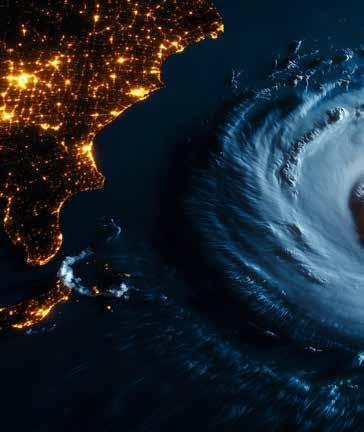
These floods have caused widespread equipment failure, downtime and cargo damage.
PROSPECTS AND PERILS
Global warming has caused the Arctic to melt at a rapid pace, allowing the Northern Sea Route (NSR) to become a viable alternative to the Suez Canal, reducing transit distances between Asia and Europe by up to 40%.
NSR traffic reached a record high in 2024, growing to nearly 38 million tonnes, a tenfold increase since 2014.
China is advancing the Polar Silk Road initiative, while Japan, South Korea and Singapore are exploring Arctic shipping viability through separate national and regional efforts.
Despite the rising temperature, significant hazards in the Artic persist. Navigation continues to be challenged by polar storms, floating ice and poor visibility. The route lacks the infrastructure and emergency response capability to handle such risks, while communication blackouts and scarcity of port services can turn minor incidents into crises.
To mitigate such risks, there are safety regulations imposed by the International Maritime Organisation on those using the passage, including mandatory ice-class vessels, significantly raising voyage costs.
As a result, insuring the NSR is complex and leads marine insurers to apply stricter underwriting terms, including higher premiums, ice-class verification and seasonal limits.
MARKET IMPACTS
Natural catastrophe losses globally have surpassed $100bn

annually for the past five years. In the past decade, the APAC region has seen the highest number of marine losses of vessels over 100GT.
Premiums are rising for facilities located in typhoon zones or low-lying floodplains although ports that invest in climate resilience, such as elevated docks or storm gates, may receive adjusted rates. To address these risks, we are shifting from historical loss data to forward-looking risk models, incorporating sea-level projections, storm surge simulations and localised climate scenarios.
Traditional models do not fully incorporate evolving climate patterns, such as rising sea temperatures, shifting storm tracks, or compounding urban vulnerabilities. Moreover, data gaps in Southeast Asia hinder granular risk modelling.
Regulators in Singapore, Hong Kong and Australia now require insurers to integrate climate risks into solvency assessments and board-level reporting, and joint efforts by governments and industry are underway to deploy weather stations and digitise port risk profile. Additionally, industry consortia are supporting knowledge sharing and decarbonisation efforts. We partner with researchers to gather accurate data, refine models and help clients mitigate exposures.
ENGINEERING AND RISK MITIGATION
Ports across APAC are engineering relevant infrastructure to mitigate extreme weather risks. For example, Singapore’s Tuas Port has raised quay walls, retrofit drainage systems
“As climate change intensifies, so does the urgency for insurers to reassess traditional models and adopt innovative strategies that can both mitigate losses and build long-term resilience.”
and relocated critical systems above flood levels. In anticipation of rising sea levels, Singapore’s Terminal 5 airport is being constructed on reclaimed land, elevated up to 5.5 meters above sea level. Additionally, taxiways are designed with a slight slope to aid drainage and the drainage system is engineered to remain effective even as sea levels increase.
As a standard safety measure, most shipyards now implement real-time weather alerts and heat protocols, with hot work rescheduled to cooler periods. Regular safety drills ensure that port staff are prepared for typhoons and flooding events. Additional business continuity planning measures include backup routing, alternative berth arrangements and contingency power solutions.
On-site risk surveys for clients can identify pain points such as exposed control panels or unsecured container stacks. With a global footprint and deep regional insight, we are wellpositioned to support APAC clients navigating both localised weather risks and international shipping challenges.
SHIFTING PARADIGM
As climate volatility continues to impact APAC’s marine industry, marine insurance plays a pivotal role. Traditional models are quickly becoming inadequate to handle the pace and impact of emerging threats.
Insurers, underwriters and marine engineers must adapt by embedding climate science into risk models, incentivising resilience and supporting infrastructure upgrades.
We are committed to supporting the marine industry mitigate the challenges posed by climate volatility head on. In the wake of climate-related disruptions, Our dedicated marine claims team ensures rapid response and recovery support, helping clients resume operations with minimal downtime. With strategic collaboration, sound engineering and agile insurance tools, together we can keep ports operational, cargo protected and trade flowing.
Marine insurance sector supports global maritime industry in tackling climate change

By Sophie Pollard , (left) partner, and Reema Shour , professional support lawyer/legal director, Hill Dickinson

In January 2025, global insurer Allianz published the latest edition of its annual Risk Barometer Report, which provides an overview of the major global risks that are a source of concern for businesses for 2025. The report is based on the outcome of a survey that received feedback from 3,778 respondents.
Cyber incidents, business interruption and natural catastrophes were ranked as the top three concerns for corporates globally. However, climate change achieved its highest ever position in the 14 years of the survey, climbing to number five in the top perceived risks, which is reflective of a new focus on climate change post-Covid-19 challenges.
Climate and nature related risks are on the rise and the financial implications for businesses are becoming more burdensome, whether they are a result of managing climate change transition risk, the increasing costs of regulatory compliance or due to operational disruptions caused by severe weather events and environmental impact.
Managing climate change transition risk through, for example, net zero strategies or decarbonisation, was identified as the key ESG/sustainability risk trend of greatest concern to the survey respondents.
One of the key actions being taken by companies to mitigate the direct impact of climate change is adapting or
increasing insurance cover. The report indicates that insurers are facing increasing global insured losses from extreme events that are occurring more frequently and are causing more severe effects because of climate change.
In the maritime context, the potential exposure of ports to climate related damage, disruptions and delays can have a potentially disastrous effect on global trade-led development. Severe and extreme weather can create hazardous conditions for ships and crew, posing an increased risk to life and property.
By way of example, the grounding of the container vessel, Ever Given, in 2021, which resulted in the obstruction of the Suez Canal, was partly caused by high winds during a sandstorm. It is vital, therefore, for all stakeholders in the international shipping industry to track the effects of climate change, implement best industry practice and comply with all domestic and international climate change regulations.
THE MARITIME REGULATORY LANDSCAPE
The global maritime sector is undergoing the challenging but crucial process of maritime decarbonisation. This is accompanied by an ever more stringent regulatory landscape.
The International Maritime Organisation (IMO) has set the shipping industry the target of reducing its greenhouse gas (GHG) emissions to achieve net-zero by or around 2050. As part of the IMO’s mandatory Net-Zero Framework, approved by the Marine Environment Protection Committee during its 83rd session (MEPC 83) in April 2025, there will be a new global fuel intensity standard and emissions pricing mechanism.
These measures are due to be formally adopted in October 2025 and will then come into force in 2027. They will become mandatory for large ocean-going ships of more than 5,000 gross tons, which emit 85% of the total CO2 emissions from international shipping.
Additionally, the FuelEU Maritime Regulation, which entered into force on 1 January 2025, requires a gradual reduction in the GHG intensity of fuels trading within the EU or European Economic Area (EEA), starting at a –2% reduction in 2025 to reach an 80% reduction by 2050.
Furthermore, since 1 January 2024, the EU Emissions Trading Scheme (EU ETS) extends to maritime transport emissions. Shipping companies must purchase and surrender EU ETS allowance for each ton of reported CO2 emissions in the scope of the system.
These two regulations are part of the European Commission’s Fit for 55 climate package that is aimed at reducing the EU’s GHG emissions by at least 55% by 2030 as compared to 1990 levels.
The UK has its own domestic maritime decarbonisation strategy, which aims for zero fuel lifecycle GHG emissions by 2050, with at least a 30% reduction by 2030 and an 80% reduction by 2040, relative to 2008 levels. The UK’s strategy is aligned with the IMO’s GHG strategy.
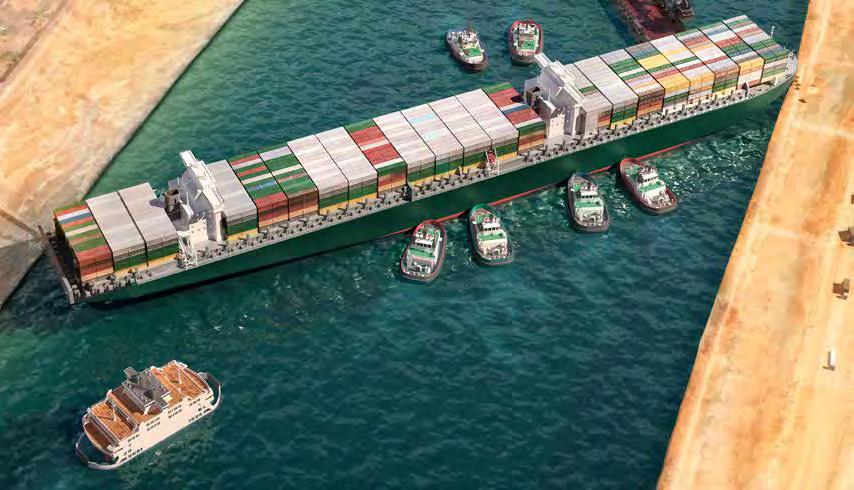
“The grounding of the container vessel, Ever Given , in 2021, which resulted in the obstruction of the Suez Canal, was partly caused by high winds during a sandstorm.”
POSEIDON PRINCIPLES FOR MARINE INSURANCE
The Poseidon Principles for Marine Insurance recognise the role that insurers play in the shipping industry and set a benchmark for responsible marine insurers, with guidance on how to achieve this.
Signatories to these Principles include P & I Clubs and other marine insurers. There are also affiliate members, as well as supporting partners (such as the International Union of Marine Insurance).
The Principles are aligned with the IMO’s policies and ambitions with regard to its GHG strategy and net-zero framework and apply globally to all shipping activities where vessels fall under the IMO’s purview.
While the IMO does not require marine insurers to report on the climate impact of their portfolios, the Principles enable insurers to assess and disclose their portfolios so that they promote responsible environmental impacts and incentivise international shipping’s decarbonisation.
The Principles are applicable to marine insurers that provide hull and machinery coverage. There are four key Principles:
(i) Assessment by signatories of the climate alignment of their hull and machinery portfolios;
(ii) Accountability through transparent data collection;
(iii) Enforcement by working with other stakeholders in the industry to meet the IMO goals; and,
(iv) Transparency by publishing the required information in the signatories’ Annual Disclosure Report and their own corporate reports.
The third Annual Disclosure Report was published in March 2025. This Report included contributions from nine signatories (representing 25% of the total deadweight of the world fleet within reporting scope) and nine affiliate members across 10 countries. Those contributing calculated climate alignment scores using vessel data from 2023.
While the results indicated that the climate alignment scores were almost +21% misaligned with the IMO’s minimum ambition in 2023, nonetheless it is anticipated that data-driven insights of this nature produced across the signatories’ H & M portfolios will inform shipowners on how to adapt to new environmental regulations and will support sustainable shipping practices going forward. As methodology improves, so will the accuracy and efficiency of the data provided in future reports.
COMMENT
Tracking emissions is becoming a standard practice in marine insurance. Initiatives of this nature will help marine insurers’ clients to comply with regulatory requirements and reduce their carbon footprint. In turn, it is expected that this will improve internal sustainability practices and contribute to the global reduction of GHG emissions from shipping.
Ethical claims management in a world of sanctions


Iryna Petrenko , manager of claims and P&I department, Nordic Marine Solutions, explains the difficulties and ethical challenges involved with the settlement of personal injury claims in a world riddled with sanctions. She argues that marine insurers must uphold their commitments to seafarers and their families through lawful, ethical and innovative approaches in this challenging environment
The maritime industry’s global nature has always posed unique operational and legal challenges.
However, the introduction of widespread geopolitical sanctions is reshaping how marine insurers manage claims, especially those concerning seafarers and their families.
The imperative to honour legitimate claims clashes with the complexities of sanctions regimes, creating unprecedented hurdles.
To illustrate, consider these recent cases that underscore these challenges.
In 2023, a Latvian seafarer employed on a Latvian-flagged vessel suffered a severe injury in Norwegian waters, losing a leg. His wife, the next of kin, lives in Russia and was to receive compensation related to his injury. Yet sanctions on Russia impede the transfer of funds, blocking payments.
Similarly, in 2025, a captain residing in an EU country died onboard a Liberian-flagged vessel in Sweden. His widow, living in Russia, awaited repatriation of the captain’s body and compensation claims, which sanctions again obstructed.
Further afield, a seafarer working on a Turkish-flagged vessel insured by an IG P&I club was fatally injured off West Africa. His widow resides in Crimea—a region subject to stringent UK, EU and US sanctions—adding layers of complexity to claim settlement.
These cases represent a troubling but real phenomenon: valid claims, grounded in contractual and ethical obligation, are delayed or blocked due to sanction-related constraints.
This situation presents a growing challenge for marine insurers: How to fulfill their commitments while operating legally and ethically in a fractured geopolitical landscape.
OPERATING IN A FRACTURED GLOBAL INDUSTRY
Shipping and marine insurance traditionally thrive on global integration, enabling the free flow of goods, capital and labour.
Today, frameworks of sanctions have fractured this seamless network. more than 30 countries, including key maritime players such as Russia, Iran, North Korea and Venezuela, face comprehensive or targeted sanctions.
These derive from multilateral organisations and unilateral efforts by the US, EU, UK and others. The result is a complex, rapidly evolving regulatory environment with conflicting rules and enforcement.
Shipping companies and insurers must navigate these turbulent waters carefully. Non-compliance risks include severe fines, legal penalties and lasting reputational harm.
The burden of navigating this dynamic landscape requires continuous monitoring, risk assessment and compliance measures built into operational practices.
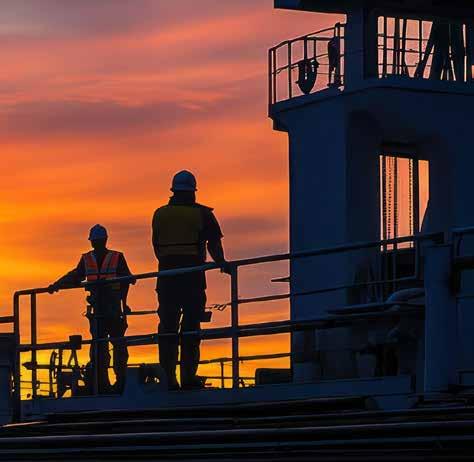
WHY BUSINESS WITH RUSSIAN SEAFARERS PERSISTS
Despite mounting sanctions, maritime operations involving Russian seafarers continue. Four principal factors contribute:
First, a substantial number of Russian seafarers hold residency abroad and remain active globally.
Second, many seafarers reside outside sanctioned regions but have family in Russia, maintaining operational and financial ties.
Third, global labour shortages drive shipowners to employ Russian seafarers - an experienced and skilled workforce - despite sanctions.
Fourth, legal and contractual complexities, including differing flag state policies and employment agreements, allow Russian seafarers to work on certain vessels legally.
Understanding these realities is critical as marine insurers increasingly confront claims that cross sanctioned borders.
CLAIMS MANAGEMENT STRATEGIES
Claims teams have adopted several compliant strategies: Humanitarian licenses and carve-outs from regulators such as the US Office of Foreign Assets Control (OFAC), His Majesty’s Treasury and the EU authorise exception payments for medical care, repatriation and compensation.
However, the application process demands detailed documentation, legal expertise and can be lengthy. Despite their availability, such licenses remain underused among our clients.
Third-party intermediaries in jurisdictions such as Turkey or the UAE help facilitate payments indirectly in compliance with sanctions. Transparency and due diligence are indispensable to avoid risk.
Escrow or trust accounts in neutral locations serve as secure holding places for funds until sanction restrictions are lifted or appropriate approvals are granted.
Payments in kind or via local partners enable delivery of services such as funeral expenses when direct payments to sanctioned
individuals are barred.
It is important to remember that P&I insurance functions as an indemnity policy. In the context of personal injury claims, the insurer initially indemnifies the member the shipowner or operator—for their incurred losses.
Subsequently, it is the member’s responsibility to address any further rights or pursue recoveries as necessary. This framework places the onus on members to manage claims effectively, while the insurer’s role remains focused on compensating covered losses rather than making direct payments to third parties.
PRACTICAL BARRIERS TO REPATRIATION
Repatriation to sanctioned regions involves more than payments. Delays or blockages in sending vital documents such as death certificates, challenges in arranging transport often requiring cash prepayment, limited transport options and soaring costs collectively complicate timely repatriation.
For example, in Norway, obtaining an original death certificate from the Russian Consulate requires a physical visit by next of kin or an authorized representative. This process is hindered further by sanctions-related travel restrictions and scrutiny.
CLEAR LEGAL GUARDRAILS NEEDED
Claims handlers must observe legal limits rigorously. Willful blindness to sanctioned ownership or efforts to circumvent restrictions through indirect payments are illegal and jeopardise insurers’ standing. Thorough documentation of due diligence is non-negotiable and no payment, however small, can be presumed sanction-safe.
Every action must be defensible under international law to uphold organisational integrity and humanitarian principles.
BEST PRACTICES FOR SANCTIONS-ERA CLAIMS
Forward-looking claims teams invest in sanctions intelligence units that monitor regulatory changes in real time, access expert legal counsel and conduct ethics reviews combining compliance with humanitarian oversight.
Maintaining comprehensive audit trails ensures accountability. Continuous training equips brokers and adjusters to handle these complex claims effectively.
Above all, industry collaboration is crucial. No single insurer, P&I club, or stakeholder can meet these challenges in isolation.
CONCLUSION
The principle remains clear. Legitimate claims know no borders. While sanctions complicate matters, marine insurers must uphold their commitments to seafarers and their families through lawful, ethical and innovative approaches.
The current focus on the Russia-Ukraine conflict may soon expand to other regions, requiring the industry to be agile, prepared and principled.
By embracing transparency, legal rigour, and collective action, the marine insurance sector will continue to safeguard its core purpose - providing support and compensation for those who power global shipping, wherever they may be.
Global labour shortages drive shipowners to employ Russian seafarers - an experienced and skilled workforce - despite sanctions.
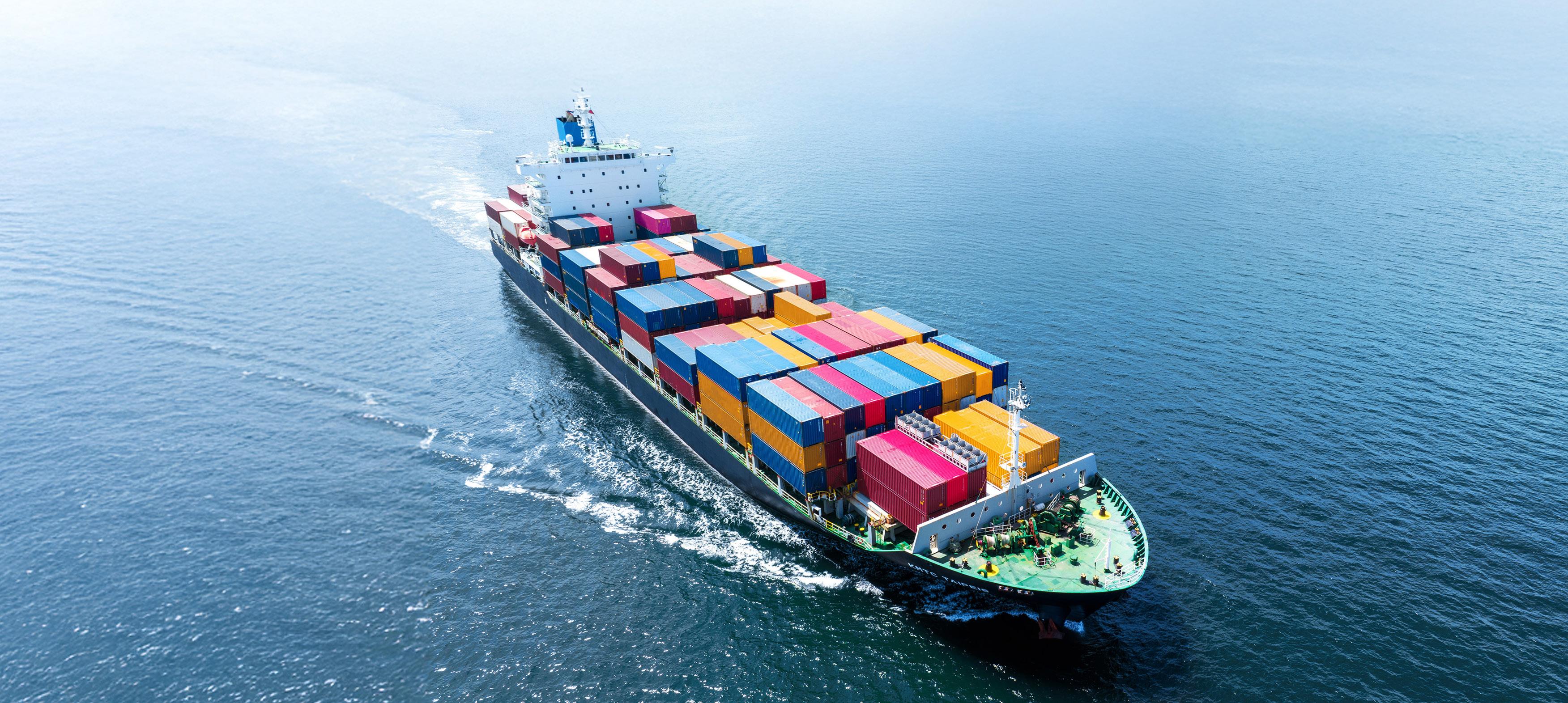
AXIS Energy Transition Syndicate 2050
The success of projects striving to deliver net zero rely on stable marine cargo supply chains. We can protect energy transition projects across the globe through our specialist Lloyd’s syndicate.
Marine Cargo activities and assets in scope
The transit, movement and storage of technologies, raw materials and non-fossil fuels required for energy transition projects and activities are all in scope. This includes, but is not limited to:
• Batteries and battery storage systems
• Electric Vehicles
• Solar PV
• Wind turbine components
• Biomass
Click here to find out more
For product and regulatory disclosures, click here.
Navigating an uncertain claims environment


With political tensions in the Red Sea intensifying, insurers are grappling with growing challenges in navigating the resulting uncertainties. Amy Eaves , (left) claims manager – marine, Lancashire Insurance Company & chair of the LMA/IUA Joint Marine Claims Committee, explores the key questions facing the claims market. She engages with Michelle Allingham , (below left) marine claims manager, Brit and Freddie Mehlig , legal director, DWF to examine both the claims market’s response and the legal implications shaping decision-making

Amy: What is the insurer’s role in the immediate aftermath of a major casualty?
Michelle: The most critical part of emergency response is minimising damage at the earliest opportunity, while reducing danger and exposure. Saving lives is always paramount. The insurer’s primary role in emergency response and salvage lies in enabling swift actions that reduce danger to the ship, environment and third parties.
Supporting and assisting the insured and the broker is of the utmost importance for an insurer in the immediate aftermath of a major casualty. Co-ordinating with the many different parties, engaging experts and providing financial support are just some of the actions that can be taken by the insurer.
Amy: How would you say emergency response in war-like scenarios has evolved through time?
Freddie: Each war situation brings about its own challenges. The scenarios are all unique and have to be individually considered. However, technology has advanced to such an extent so as to enable us to gather information quickly. While the ability to gather information and communications promptly is helpful, it must be balanced with prudent fact checking and analysis.
Michelle: When a major event occurs historically, it has often prompted the London market to revise and on occasion update policy wordings. It is essential that policy wordings are continually and thoughtfully reviewed to ensure they remain fit for purpose. For example, clauses developed for one crisis may not be suitable for the complexities of a subsequent crisis or more recent crisis.
Amy: How are insurers currently classifying losses in the Red Sea? As war risks, piracy terrorism or marine perils?
Freddie: The Institute wordings used in the London market invariably refer to the above perils as being “a war, civil war, revolution, rebellion, insurrection, or civil strife arising therefrom, or any hostile act by or against a belligerent power… or any terrorist or any person acting maliciously or from a political motive”.
Whether or not there is a state of war involving the Houthi’s may not be determinative. The war-like acts of firing missiles, use of UAVs or any other weaponry to cause physical damage to a ship and its cargo (or worse, inflict harm to crew) are likely to be captured within the above terms. At the time of writing, the UK has not prescribed the Houthis as a terrorist organisation under the Terrorism Act 2000. That being said, the definition of a terrorist in English law under the Terrorism Act 2000 would seem to cover the Houthis and their actions in the Red Sea to date. On that basis, the Institute wordings are likely to capture such acts by the Houthis.
There may be a more complex issue involving analysis of both the facts of any particular incident and the law of whether the incident was also proximately caused by “war” or “any hostile act by or against a belligerent power”, but it appears likely that this is an academic exercise with the end result being the same for the purposes of policy coverage. To date, however, there are no judgments dealing specifically with the issues arising from the Red Sea crisis and how such acts may be construed in the context of marine insurance under English law.
Amy: If salvage services are engaged during a hostile incident, how are awards likely to be treated?
Michelle: This is likely to depend on the salvage agreement
and whether it is conducted on LOF terms or another contractual framework. Deciding and agreeing on the framework promptly avoids the loss of the “golden hours” of a casualty response and may have a direct impact on the success (or otherwise) of the operation, and in turn the extent of any losses flowing from the casualty. Set terms, such as LOF, are capable of being agreed promptly, whereas bespoke contracts that are not already in place may delay the immediate response.
Amy: In light of the escalating threats to merchant shipping, what strategic considerations should insurers prioritise and what proactive measures are being adopted across the marine industry to mitigate the risks of targeted attacks?
Freddie: There are a wide range of views as to suitable risk mitigation for vessels transiting the Red Sea. The situation is a complicated multi-faceted problem, where the Houthi threat to merchant shipping in the Red Sea is a second or third order consequence of a long-standing geopolitical instability in the Middle East, particularly following the recent Israel/Hamas and Israel/Iran conflicts.
Michelle: There are variables which may well stretch beyond any sensible risk-mitigation that would have any material effect on a potential casualty. If a ship transits via the Red Sea, it does so with an increasingly evident chance that it may be attacked, directly or collaterally, and faces the risk of losses which stem from that approach. However, the total number of casualties and resulting losses from attacks in the Red Sea since late 2023 are dwarfed by the number of vessels which have transited the Red Sea without incident in that period. Losses are often infrequent but severe in nature. Insurers are there to assist in the risk mitigation strategy, while accepting there is a chance the adventure may be attacked, directly or collaterally, and price that risk accordingly.
Freddie: In terms of policy cover, insurers will always need to look carefully at the terms of the cover. For instance, if an insured has breached, and remains in breach, of a warranty at the time of a casualty, then there may be a remedy under Section 10 of the Insurance Act 2015. The days of breach of warranty resulting in covers being rendered void under the Marine Insurance Act 1906 are gone. Insurers need to therefore look carefully at the evolving nature of risks and any warranties and/or subjectivities that may reflect the risk presented to them when providing war risks or breach cover.
Amy: How do you view the importance of co-ordinating and managing the sometimes competing interests during an emergency response?
Michelle: Part of insurers’ role is to assist and guide
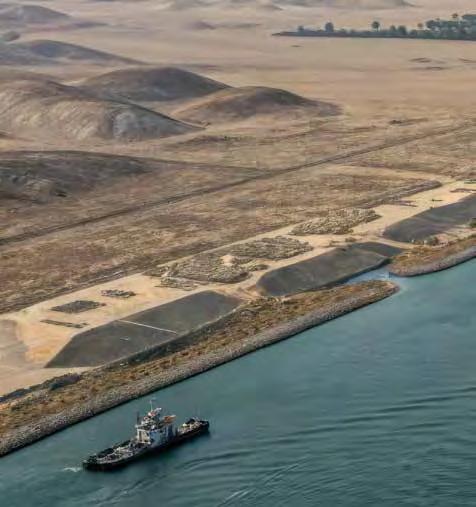
“At the time of writing, the UK has not prescribed the Houthis as a terrorist organisation under the Terrorism Act 2000. That being said, the definition of a terrorist in English law under the Terrorism Act 2000 would seem to cover the Houthis and their actions in the Red Sea to date. On that basis, the Institute wordings are likely to capture such acts by the Houthis.”
those affected by the incident in question. That may be challenging, with competing interests across various marine business lines, but good communication goes a long way to bringing those parties together for a common goal.
Amy: You’ve raised some interesting points Michelle. In recent years, the market has strived to enhance communication and co-ordination between hull, war and cargo interests and P & I Clubs. In 2023, the LMA / IUA Joint Marine Claims Committee released the “Guidelines for casualty liaison between the JMCC and the International Group”. This is a great example of promoting timely and

effective engagement, establishing a structured liaison framework and ensuring that delays are avoided where possible.
Amy: How have insurers handled sanctions concerns in the region?
Freddie: The question of sanctions is likely to be a live issue in terms of the response and use of assets in the region. Lead insurers should be aware of a range of aspects, such as the domiciles of followers or the involvement of US persons within their own information chain and what that can mean for sanctions issues. Being alive to it at the earliest opportunity is important in circumstances where financial institutions, with their own responsibilities and obligations, are, by virtue of the insurance cover provided, required to finance costs of an emergency response but are not able to do so without completing the required checks.
Michelle: Those competing points of view do not necessarily facilitate a prompt response operationally. Therefore, it is imperative that insurers are alive to any compliance issues, such as sanctions, so that they can be on the front foot of considering licences and proper notification to any relevant authorities, as well as alerting followers about the position for their own due diligence.
Amy: Could prolonged conflict in the Red Sea trigger a wider reconsideration of standard war clauses in marine contracts?
Michelle: As the geopolitical landscape continues to evolve, it is essential that war clauses adapt accordingly - ensuring that they remain fit for purpose for both the insureds that they protect and the insurers managing these risks. Without such clauses, international trade would face significant disruption. In response to the specific question of whether a conflict during a period of broader peace is covered, the answer is “unlikely on the face of it,” as these clauses are precisely designed to address such scenarios. The clauses have proven effective in situations such as the Red Sea conflict, though it has long been recognised that detention risks have shifted. A working group has been actively reviewing the wording around detention and cancellation.
SUMMARY
While tensions in the Red Sea continue to test the market, the conversations between Amy, Michelle and Freddie make clear that the marine insurance industry is not standing still. By combining commercial insight with technical expertise, insurers are better positioned to navigate uncertainty, strengthen collaboration and build resilience. The challenges may be complex, but they also present an opportunity for the London market to adapt and emerge stronger.
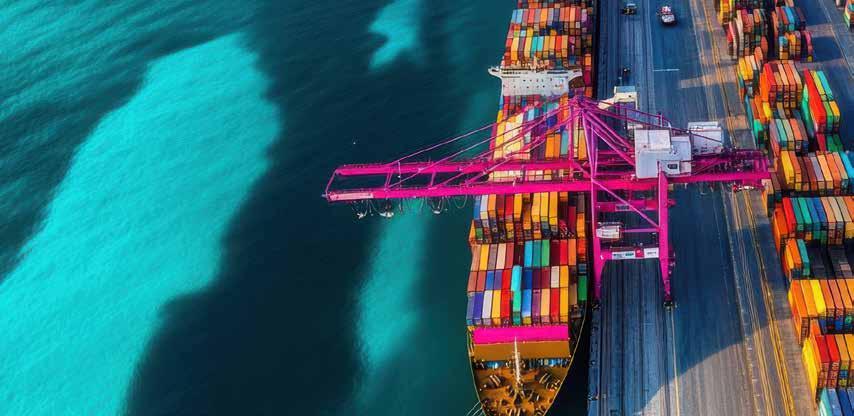
Finally, a recognised port of refuge in the UAE?


Jasmin Fichte , (left) managing partner and Shehab Mamdouh , managing associate, Fichte & Co argue that the UAE is not only reinforcing its status as a major maritime hub in the MENA region but is also setting a global precedent for responsible and strategic maritime governance. With its growing experience, infrastructure, and commitment to international best practices, the UAE is well-positioned to be recognised as a trusted and capable port of refuge in the global maritime community
There has been an alarming increase in ship casualties in recent years, often caused by fire in containers, in holds or in the engine room.
Recent casualties in the MENA region include the Maersk Franksfurt (fire and explosion), the ASL Bauhinia (fire in containers on board) and the Wan Hai 503 (fire and explosions), all of which eventually found a port of refuge in Jebel Ali, Dubai.
The weeks and months that are often passing between the incident and the final arrival in a port of refuge have led to a revived discussion about a recognised and regulated port of refuge in the UAE.
While it remains the liability of the ship operator to find a safe place of refuge for his vessel in distress, we have seen several cases where the refusal by coastal states to accept these vessels in distress has led to significant damage as seen in the X-Press Pearl incident.
In addition to the catastrophic environmental, navigational and commercial consequences resulting from her sinking, the Sri Lankan Court judgment on the X-Press Pearl, ordering a whopping $1bn compensation, following the sinking and environmental damage, is massively increasing the liabilities of the insurance companies and shipowners.
PORT OF REFUGE CONCEPT
A port (or place) of refuge serves as a critical safe haven for
vessels in distress at sea. Whether due to extreme weather, structural failure, mechanical breakdowns, onboard fires, or other emergencies, a ship may need to divert to the nearest safe port.
In such situations, the port of refuge becomes the vessel’s final recourse to seek assistance and mitigate the damages it has sustained as well as reducing risks to navigation and protecting human life and the environment.
In the absence of binding international regulations or conventions obligating coastal states to provide refuge to distressed vessels, the legal framework remains largely discretionary.
Art. 11 of the Salvage Convention (ratified by the UAE in 1993) provides that “a state party shall, whenever regulating or deciding upon matters relating to salvage operations such as admittance to ports of vessels in distress …take into account the need for cooperation between salvors, other interested parties and public authorities to ensure the efficient and successful performance of salvage operations for the purpose of saving life or property in danger as well as preventing damage to the environment in general.”
The United Nations Convention on the Law of the Sea (UNCLOS) would be the most obvious convention to regulate a member state’s obligation regarding a port of refuge, however, there is no mention of a port of refuge concept. Instead, Art. 2
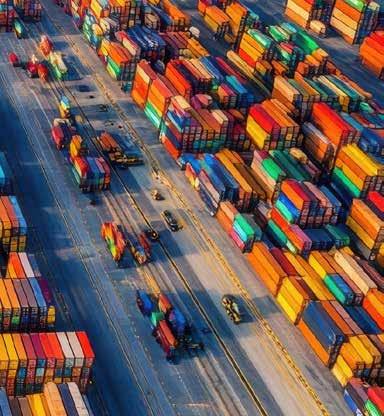
recognises the right of states to regulate entry into their ports and further provisions establish the right of coastal states to take action to protect their coastline.
In general average terms, towing the vessel to a port of refuge is considered an allowable expense under the York-Antwerp Rules, However the Rules do not make any reference to specific regulations for port of refuge.
The Comité Maritime International acknowledged the lack of binding regulations and provided a draft convention to the International Maritime Organisation (IMO), which in turn decided to provide only a guideline (IMO Resolution A. 1184 (33)).
Also the European Maritime Safety Agency issued EU Operational Guidelines on Places of Refuge under the VTMIS Directive (Directive 2002/59/EC as amended).
The above guidelines are non- binding and serve solely as recommendations for for coastal states, shipmasters, salvors and other involved parties to guide their decisions when a vessel in need of assistance seeks a place of refuge.
COMPLEXITIES AND LIABILITIES
While the respective parties for the vessel in distress (and here we speak of the shipowner, operator, insurer, salvor, class, flag state etc) need to decide on a suitable port of refuge, so must the respective state assess the accompanying risks of accepting that specific vessel.
This decision involves significant commercial, environmental, financial and humanitarian risks.
The decision to divert a ship to a port of refuge involves collaboration between three key stakeholders:
1. Flag state: The country of registration assesses regulatory compliance and safety;
2. Port state: The host country evaluates environmental risks, infrastructure capability and overall feasibility; and,
3. Insurance providers & salvors: P&I clubs, underwriters, along with the appointed salvors ensure that all risks are properly assessed, managed, and covered financially.
This tripartite cooperation is crucial to ensure a successful and
legally sound response to maritime emergencies.
SELECTING A PORT OF REFUGE
Determining an appropriate port of refuge involves a multidimensional assessment, often with the salvor who signed the LOF being on the forefront. Key matters include:
• Safety and accessibility: The port must be reachable given the ship’s condition, with adequate depth, manoeuvrability and anchorage;
• Facilities and services: It must offer cargo handling equipment, waste management facilities and secure storage;
• Environmental and security factors: The port must not pose added environmental risks or be located in high-security threat zones; and,
• Regulatory compliance: Authorities must be willing and able to accept the distressed vessel under clear legal frameworks and insurance coverages.
PORT STATE RISK ASSESSMENT
Port states typically impose strict conditions before granting refuge. These are:
• A valid Lloyd’s Open Form (LOF) agreement has to be in place;
• Full P&I (protection & indemnity) and hull & machinery insurance coverages must be confirmed. Will the Club provide an LoI?;
• Appointment of reliable and experienced salvors;
• The port needs to have the experience and the relevant insurance cover; and
• A certified waste management company must be involved to handle any hazardous materials.
Each country has the discretion to set its own internal policies and requirements, which means decisions are often made on a case-by-case basis depending on the nature of the emergency.
There have been high-profile case in which ports denied entry to distressed ships, often due to environmental concerns or political sensitivities.
Notably, the Prestige and X-Press Pearl incidents resulted in catastrophic oil spills and vessel losses after being refused refuge. These tragedies highlight the urgent need for a more unified international approach to handling vessels in distress.
THE UAE’S ROLE
While the absence of binding international regulations makes it difficult to obligate any state to act as a port of refuge, the UAE has proven its capability and willingness to play this vital role Its recent actions underscore the country’s readiness to manage complex salvage operations, coordinate with multiple stakeholders and mitigate potential environmental and commercial risks.
Streamlining the processes by providing a national regulation of a port of refuge and officially recognizing respective UAE ports as such, would certainly provide involved parties with further confidence and we are confident that the UAE maritime administration is already working on respective regulations and will issue a ministerial resolution by the end of this year.
The UAE is not only reinforcing its status as a major maritime hub in the region but is also setting a global precedent for responsible and strategic maritime governance. With its growing experience, infrastructure and commitment to international best practices, the UAE is well-positioned to be recognized as a trusted and capable port of refuge in the global maritime community.
Lessons from recent disputes in cargo and hull


Mohamed El Hawawy , (left) partner and head of Middle East shipping and insurance, and Saif Almobideen , partner of Stephenson Harwood in Dubai, review latest important developments in marine claims and the rising role of the UAE in maritime law
The shipping industry faces constant risks, including physical damage, war, regulatory and environmental threats. Marine insurance, especially cargo and hull cover, remains fundamental to managing these exposures.
As global trade evolves, claims have become more complex, often involving policy interpretation and increased litigation. Staying updated is crucial for legal practitioners and insurers.
While English courts shape much of the legal framework, the UAE’s modernised maritime law has made it an increasingly important forum for casualties and disputes. Understanding both global precedents and UAE court practice is now essential.
SHIFTING RISKS AND LEGAL LESSONS
Cargo insurance has traditionally covered physical loss or damage during transit, however recent disputes reflect a marked shift towards matters such as delay, contamination, regulatory non-compliance and hazardous cargo. Courts are both reaffirming established principles and reassessing the allocation of risk between insurers and assureds.
In the Supreme Court’s decision of Alize 1954 [2021] UKSC 51, it was confirmed that a defective pre-voyage passage plan can render a vessel unseaworthy. As a result, shipowners cannot rely on Article IV HVR, the “error in navigation” defence, for losses arising from poor pre-planning.
This strengthens subrogation prospects for cargo insurers where defective planning links to loss, while requiring shipowners and their insurers to maintain higher standards in planning, updating navigational notices and auditable records.
In Global Process Systems [2011] UKSC 5 the court clarified that “inherent vice” in marine insurance excludes cover only if the loss is solely due to the natural behaviour or internal condition of the cargo, without any external accident or event.
Losses from unexpected or accidental events, even under ‘normal’ sea conditions, may still be insured. This remains influential as insurers often invoke “inherent vice” in structural or cargo failure incidents.
Recently, the allocation of the evidential burden in cargo disputes was reset in Volcafe Ltd [2018] UKSC 61, where the court held that the carrier, as bailee, must prove it took reasonable care of the cargo or that loss was due to an Article IV exemption.
This increases the importance of contemporaneous records for stowage, ventilation and cargo monitoring and has shifted litigation dynamics in favour of cargo insurers, that gain leverage from inadequate documentation.
Hazardous cargo disputes are now a leading concern, with fires, mis-declaration and improper packaging driving claims and prompting stricter warranties and survey requirements. Fraud and misrepresentation remain central.
In Versloot Dredging [2016] UKSC 45, the Court ruled that “collateral lies” do not void an otherwise valid claim. Contrastingly, Suez Fortune [2019] EWHC 2599 (Comm) confirmed that fraudulent claims, where the loss itself is fabricated or caused by the assured, remain irrecoverable. These reaffirm the importance of good faith, while clarifying the line between misrepresentation and outright fraud.
TRADITIONAL PERILS TO MODERN THREATS
Hull insurance, which covers physical damage to vessels, has evolved alongside the increasing complexity of shipping operations and related risks.
Disputes increasingly stem from machinery breakdowns, cyber exposures and the impact of sanctions on claims, though traditional matters such as perils of the sea, latent defects and war risks still dominate litigation.
The interpretation of “perils of the sea” and “latent defect” remains pivotal. In Global Process Systems Inc, the Court clarified that losses from genuine sea perils are covered, while inherent vice and ordinary wear are not. This distinction remains significant, especially where structural failures or machinery damage arise in borderline conditions.
The scope of general average was clarified in Herculito Maritime Ltd [2024] UKSC 2, confirming cargo interests’
“International insurers and shipowners increasingly turn to the UAE as a port of refuge, reflecting trust in its legal system and logistics services.”

liability for ransom payments and highlighting the need for hull policies to align with GA provisions and the York-Antwerp Rules. Similarly, The Renos [2019] UKSC 29 emphasised the importance of timely notices of abandonment and early expert repair estimates.
Cyber risk has further introduced new uncertainties. While traditional hull policies excluded cyber incidents, novel clauses like the CL380 and LMA cyber have narrowed coverage, requiring assureds to understand exclusions and available endorsements. Sanctions-related disputes also expose the need for precise policy drafting and coordination between hull and war risk covers, especially in high-risk regions.
MIDDLE EAST GLIMPSE
There has been a recent rise in marine casualties in the Middle East from fire, war risks to collisions and allisions. The UAE has emerged as a key jurisdiction for marine insurance disputes, with its modernised 2023 maritime law, which offers a clearer framework for casualties, limitation of liability and cargo claims. Crucially, the law now includes a dedicated chapter on marine insurance, distinguishing it from general insurance under the Civil Code. As such, international insurers and shipowners increasingly turn to the UAE as a port of refuge, reflecting trust in its legal system and logistics services.
Despite the pivotal role of Middle Eastern claims experts in investigating incidents and adjusting claims, practical challenges remain, especially in preserving evidence when access to vessels and documents are restricted.
Although some P&I Clubs and insurers have agreements with UAE authorities, delays to ship access can complicate investigations. Rapid mobilisation of surveyors and adjusters is therefore essential. UAE courts also give weight on technical and expert reports, and parties with detailed, contemporaneous records of stowage, navigation, or repairs are more likely to succeed, especially as UAE judges may appoint independent experts whose findings strongly influence outcomes.
TACTICS FOR SUCCESSFUL CLAIMS
A recurring challenge in cargo and hull claims is interpreting policy wordings and exclusions, with courts stressing the need for clarity and construing ambiguities against insurers.
The Insurance Act 2015 and recent case law have raised the bar for disclosure and fair presentation, limiting insurers’ ability to rely on technical breaches and reinforcing the principle of utmost good faith.
Both assureds and insurers must prioritise transparency, accurate recordkeeping and clear communication throughout the claims process. The rise of new risks, such as lithiumion batteries and cyber threats, has made strict compliance with warranties and updated policy wordings even more important.
Ultimately, success in cargo and hull claims depends less on legal theory than on practical execution; clear wordings, timely disclosure and thorough documentation are now essential, as outcomes turn on what assured’s disclose, insurer’s draft and what either can prove.
Nordics

Marine Insurance Nordics will return on 18th November 2025 at the Quality Hotel™ Hasle Linie, Oslo, Norway. With a record number of attendees in 2024 , this event is specifically designed to bring together all the key players in the Nordic marine insurance market. The agenda will feature a range of senior speakers discussing, debating and offering actionable insights into the issues affecting the region in 2025 and beyond.
PROUD SPONSORS




HERMAN STEEN, PARTNER, WIKBORG REIN
RORY COLACICCHI, PARTNER, MARINE-TRANSPORTATION &
LENE-CAMILLA NORDLIE, VICE PRESIDENT, NORWAY & SWEDEN, MANAGING DIRECTOR, GARD
ERIK ANDREASSEN, CHAIRMAN, HYDOR AS
IRYNA PETRENKO, MANAGER OF CLAIMS AND P&I DEPARTMENT,
ANDREAS MEIDELL, PARTNER, THOMMESSEN
ANDERS LANGELAND JOHANNESSEN, GLOBAL HEAD
ANDERS FURNES, SENIOR VICE PRESIDENT MARINE UNDERWRITING, NORWEGIAN HULL

HESSELBRANDT,NORDIC PORTFOLIO MANAGER MARINE, QBE
NICK MADDALENA, MANAGING DIRECTOR, AMBREY GLOBAL SPECIALTY
KJELL INGE BØRNES, HEAD OF
5-MINUTE BREAK TO ALLOW DELEGATES TO CHANGE TABLES AND THE TABLES WILL THEN BE REPEATED IN A SECOND 25-MINUTE SEATING.
WALTON, ASSISTANT CORPORATE DIRECTOR, WEST OF ENGLAND
Navigating geopolitical and transportation risks in the Middle East

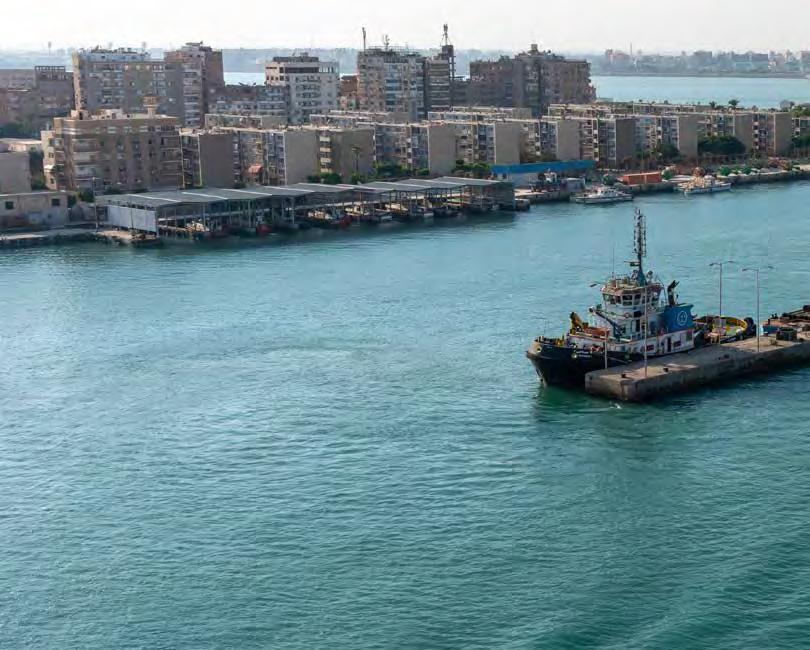


Jord Oostrom , chief commercial officer, Middle East, Aon, Karthick Gowrisanker , (below) regional head of marine, United Arab Emirates, Aon and Tom Bomford (above right) director, marine hull, global, of Aon offers advice to risk managers operating in the rapidly evolving region of the Middle East
Evolving developments in the Middle East necessitate businesses operating in the region to reassess risk profiles by preparing for rapid and extreme scenarios. This requires flexible insurance, operational oversight and contingency planning to ensure resilience and real-time responsiveness.
The key messages for risk managers operating in energy, shipping and logistics sectors in the region are:
1. Ongoing geopolitical uncertainty demands dynamic insurance strategies, particularly in the areas of marine, cargo and political risk. Responses must be adaptable and continually updated for strategic locations to ensure business continuity amid instability;
2. Businesses should proactively assess how changes to supply lines, shipping routes, security protocols and insurance coverage terms impact their risk transfer approach. This requires frequent risk analysis, coordination with logistics, legal and insurance teams and preemptive compliance planning; and,
3. Rapid response times, real-time information sharing and role clarity between all parties - including insurers, brokers, risk engineers and operational teams - are vital for
coordinated responses to potential disruptions.
RISK AND INSURANCE IN A SHIFTING LANDSCAPE For global businesses - especially those in energy, shipping and logistics - the current risk environment in the Middle East underscores the need for proactive risk management and agile insurance strategies.
Insurance continues to play a vital role in enabling business continuity amid uncertainty. Across the maritime sector in particular, the demand for war risk and political violence insurance protection remains strong.
However, in an environment in which risk boundaries can shift overnight, purchasing insurance coverage may not be enough because its ongoing adequacy must be assessed.
For example, areas once not considered high risk may be classified as such within days, affecting availability, pricing and bringing possible exclusions.
In this context, companies must act across three parallel dimensions:
• Continuous geo-risk identification and monitoring, including alternative routing and logistical exposure;
• Insurance structural flexibility - segregating marine vs. war risk, adjusting limits and enabling extensions; and,

• Use of real-time intelligence systems and close broker support for responsive decision making amid evolving regulatory and security landscapes.
There are a number of key transportation and logistics insurance considerations in this fluid environment.
> GPS interference and navigation disruption
Significant GPS interference has been recently reported in the Gulf and Strait of Hormuz, posing risks for both maritime and aviation operations. Vessels and aircraft may experience spoofing or jamming, leading to navigation inaccuracies. It is advisable to consider integrated cyber insurance coverage, deploy GPS-independent backup navigation systems and apply real-time risk monitoring platforms to support route planning and insurance evaluation.
> War risk terms and flexibility
Some marine insurers are shortening cancellation notice/ validity periods on war breach rates (from 48 to 24 hours), allowing for rapid rate adjustments in response to changing conditions. Clients may want to review inland war insurance for cargo moved by road or rail within the region. Insurance flexibility is diminishing, so more focused, proactive management of war risks across transport modes may be
“Businesses should proactively assess how changes to supply lines, shipping routes, security protocols and insurance coverage terms impact their risk transfer approach.”
required.
> Vessel detainments
A number of high-profile detainments have occurred in the past year, reminding operators and cargo owners to assess detainment scenarios within business continuity and insurance planning. The long-term impact of such incidents can significantly affect cargo, vessel and crew liabilities.
> Security and threat levels in the Red Sea
Despite declared ceasefires, areas such as the Red Sea and Bab al-Mandeb Strait remain designated high-risk by underwriters due to ongoing regional conflicts, piracy and geopolitical tensions. Ongoing monitoring and adaptive security measures are essential for ship operators. Clear contractual responsibility must be defined between cargo owners, vessel owners and freight forwarders.
There are then also a number of wider risk considerations that need to be taken into account.
> Energy infrastructure and physical damage
Operators in the power and energy sectors — often viewed as critical infrastructure — may face heightened exposure. Adequate insurance coverage must address not only direct property damage but also associated risks such as environmental liability and interruption to production. The
insurance should be broad and tailored both operationally and geographically.
> Changes to sanctions
Organisations should remain vigilant in monitoring any changes to international sanctions. Whether through the expansion of existing sanctions, or the imposition of new measures on additional territories, such changes can significantly affect risk assessments and insurance coverage.
> Employee travel
Employers have a duty of care to safeguard traveling employees. This includes monitoring threat levels in country, preparing personnel prior to travel and having procedures in place to react to travel-related incidents.
> Business continuity
Delays - whether caused by security threats, logistical or geopolitical disruptions - can result in storage fees, contractual penalties, delayed delivery, brand damage, client attrition and lost future deals. It is essential to incorporate such scenarios into both risk and business continuity planning, including:
• Mapping reliance on specific shipping lanes and assessing land/air alternatives;
• Appropriate delay-in-transit coverage;
• Reviewing whether current policies cover indirect costs in addition to physical loss;
• Early coordination with brokers to confirm policy response to route changes, port deviations or prolonged stays; and,
• Establishing a fast incident reporting and documentation process to support claim filing and internal operational reviews.
There are also a number of operational recommendations for managing supply chain risk.
> Evaluate insurance options strategically:
• Analyse gaps between insurance coverage and actual exposures;
• Assess your current risk and insurance strategies, with a preference for modular, flexible programmes that allow rapid adaptation to geopolitical or logistical shifts;
• For cargo risks, enhance war risk insurance cover to include inland transportation, and explore stock throughput policies and alternative risk transfer solutions; and
• For construction projects, consider project cargo insurance, including delay in start-up coverage.
> Improve end-to-end supply chain visibility:
• Focus on supply chain mapping and holistic logistics profile risk assessments to understand vulnerabilities, including second- and third-tier suppliers, who may present critical failure points;
• Identify and implement integrated layers of loss prevention;
• Review contracts to ensure liability management;
• Introduce operational risk KPIs - such as critical inventory availability, response time to disruptions and
capability to switch to alternative routing; and
• Designate control points along the logistics journey, each with a dedicated operational lead.
> Leverage emerging technological solutions:
• Use technology to maintain real-time supply chain visibility, track cargo, ensure product integrity, monitor compliance performance, identify varying levels of partner risk and implement corrective actions to prevent losses;
• Invest in cyber resilience by implementing robust IT cyber security measures and training employees to recognise and prevent social engineering threats like phishing; and
• Establish automated response protocols - smart alerts for critical risk points in the chain.
> Apply risk mitigation measures:
• Leverage relationships with insurers to navigate challenges, as advocacy is crucial for claims. Include access to certified international loss adjusters;
• Develop audit and compliance monitoring processes to ensure that loss prevention and risk mitigation procedures are followed to maintain supply chain integrity; and
• Conduct regular audits to ensure ongoing procedural adherence.
For businesses operating in the region during these uncertain times, consider the following strategies to protect your operational resilience:
• Engage with regional experts. Collaborate with knowledgeable brokers, certified loss adjusters and security advisors to navigate the complexities of the Middle East’s risk environment effectively. Include domain-specific specialist teams (eg transport, energy, security, regulation) so all risk dimensions are addressed;
• Hold regular roundtables. Invite internal stakeholders, insurance brokers, risk consultants and key suppliers to ensure alignment;
• Review and adapt insurance coverage. Conduct regular reviews of insurance portfolios to ensure adequate protection is aligned with current threats;
• Develop comprehensive plans. Strengthen and test business continuity and crisis response strategies and integrate insurance solutions to address both immediate incidents and long-term disruption;
• Invest in training and awareness. Educate teams on coverage nuances and build communication protocols for real-time decision making. Run simulations for complex scenarios (e.g., disruption + cyber attack + port delay).
Establish a dedicated incident response team with clearly defined roles and pre-approved procedures; and
• Monitor developments. Stay informed of regional dynamics and remain agile in responding to evolving risk scenarios. Events can unfold quickly and businesses must aim to be ready for any scenario.
Talk to your risk advisor to access advice and solutions that can help your organisation manage risks related to operating in the region.

The rise of the UAE insurance market

Gian Piero Priano, left, global head of claims of Cambiaso Risso Group, and Matteo Pescatori , senior marine broker of Orion Insurance & Reinsurance Broker Group (in strategic alliance with Cambiaso Risso)
The insurance sector has seen an impressive growth and evolution in the Middle East, especially in the United Arab Emirates (UAE). Today, the UAE stands as the largest insurance market in the Gulf Cooperation Council (GCC) by premium volume with more than 60 licensed insurers with a mix of conventional and Takaful (Islamic insurance) providers.
Notably, the concept of insurance was introduced to the UAE well before the country’s formation in 1971. In the pre-UAE era (at the time of the Trucial States - a group of tribal confederations to the south of the Persian Gulf whose leaders had signed protective treaties, or truces, with the UK between 1820 and 1892), foreign insurance companies operated with limited offerings, mainly mono-line marine insurance to export goods.
Following the formation of the UAE in 1971, the government began building a legal and regulatory framework for financial services. The first national insurance companies emerged during this period to serve local needs and reduce reliance on foreign insurers. Examples include Oman Insurance established in 1975 (now Sukoon Insurance)

and ADNIC, the Abu Dhabi National Insurance Company founded in 1972.
As the economy diversified, new insurance lines — health, motor, property and life — were introduced to meet the evolving risk landscape. A significant milestone was reached in 2007 with the establishment of the UAE Insurance Authority (IA) under Federal Law No. 6. The IA was tasked with licensing, regulating, reviewing solvency standards and enabling consumer protection.
This period saw the introduction of compulsory insurance schemes. Motor insurance became mandatory across the UAE, while health insurance was made mandatory in Abu Dhabi (2006) and Dubai (2014).
In 2021, the IA was merged into the Central Bank of the UAE, centralising supervision of the insurance and banking sectors enhancing regulatory consistency and supervision.
INTERNATIONAL EXPANSION
Initially, UAE insurers focused on domestic and GCC-based marine risks. Between 2009 and 2015, some UAE insurers began writing shares of international ship fleets. However, a global downturn in marine insurance during those years
resulted in heavy losses, affecting international and local players alike. Consequently, UAE insurers reassessed their appetite and gradually refocused on regional business (GCC and Middle East and North Africa), having a stronger market understanding and control.
At the same time, policyholders shifted their approach to insurance placements. While many shipowners continued to insure themselves locally maintaining close relationships with domestic insurers, others began exploring international placement solutions for broader coverage and potentially better pricing, due in part to new technologies and improvements in the market.
MAINLAND AND FREEZONE INSURERS
The UAE insurance sector is generally divided into two categories: mainland insurers and Freezone insurers, based in Dubai and Abu Dhabi.
Mainland insurers fall under the direct supervision of the UAE Central Bank and cater primarily to the domestic market. They are licensed to issue policies in compliance with UAE law and can provide local claims support and servicing.
Freezone insurers are foreign insurers regulated by their home country authorities. Therefore, freezone insurers are typically international players, such as Lloyd’s of London or regional hubs of global players. Their focus is often on international placements, facultative reinsurance and large commercial risks. The recent influx into the various freezones of MGAs, Lloyd’s Syndicates and specialty providers are a testimony to the UAE’s growing reputation as a global insurance hub.
MATURING MARINE MARKET
Focusing specifically on marine insurance, a growing level of
“In terms of vessel types, the market is typically divided between ‘Blue Water’ tonnage, or ocean-going vessels, such as tankers, bulk carriers and container vessels, used to export oil and to import refined goods across the region and ‘Brown Water’ tonnage, such as barges, tugs, crew boats and smaller supply vessels.”
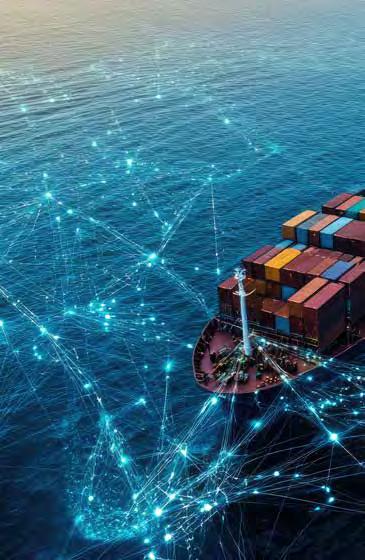
technical understanding and appetite among UAE and GCC insurers is observed.
While historically most policies were underwritten under English conditions, recent years have seen a rise in usage of the Nordic Plan or other conditions depending often on the claim leader or type of vessels.
In terms of vessel types, the market is typically divided between ‘blue water’ tonnage, or ocean-going vessels, such as tankers, bulk carriers and container vessels, used to export oil and to import refined goods across the region and ‘brown water’ tonnage, such as barges, tugs, crew boats and smaller supply vessels supporting local projects, especially in the offshore oil & gas, port development and coastal construction sectors.
The above reflects the dual-track nature of regional trade: while tankers handle outbound oil exports, bulkers and containers facilitate inbound trade. Brown water vessels support large-scale infrastructure and energy projects in the various GCC countries.

MARINE CLAIMS: NEW SCENARIOS
Aside from recurring marine hull claims, the UAE and GCC regions have been experiencing some new interesting phenomena, some of which raise questions of coverage under the traditional conditions.
The ongoing conflicts make sailing near some areas of Middle East dangerous and the zone is considered as an additional premium area by war risk insurers.
As we live in modern times, warfare is also technological and digital. In that respect, it is worth noting that in the last few months both UAE and GCC have been the target of several “spoofing” attacks that disrupted the operations of many shipowners.
From an oceangoing vessel perspective, those events are particularly concerning given their effects on operational risks. The transmission of fake global navigation satellite system or GPS signals affects the navigational equipment showing a false position of the vessel. Such displacement of the vessel’s actual position relative to the digital charts may
“It is worth noting that in light of spoofing attacks and other similar risks, some shipowners prefer not to operate their vessels with an ensuing loss of business opportunities and income.’’
lead to groundings or even collisions.
As recently commented on by the Average Adjusters Association, the standard cyber exclusion clauses included in hull policies removes underwriters’ liabilities when a computer system is used as a “means of inflicting harm” to the ship. As noted by the AAA, “assuming that insurers have been able to demonstrate that the use of a computer system, etc. to spoof an insured vessel’s GPS system has played a genuine causative role in a casualty, then they must finally be able to demonstrate that this was as a means of inflicting harm”.
While it is basically impossible to
identify the responsible party, the location of the spoofing attacks might give context and determine whether the unidentified spoofer had harmful intentions.
It is worth noting that in light of spoofing attacks and other similar risks, some shipowners prefer not to operate their vessels with an ensuing loss of business opportunities and income.
In conclusion, the UAE’s marine insurance landscape is evolving in both complexity and sophistication. With deeper regional integration, rising technical capabilities and a strong regulatory backbone, the UAE continues to position itself as a growing insurance and reinsurance center in the global maritime economy. The shifting dynamics between local and international placements suggest that this market will remain a key area of development for years to come.
From a potential claim perspective, the area is experiencing new types of events which may not be covered by traditional marine insurance. Understanding new threats and adopting new protections might be the only solution.
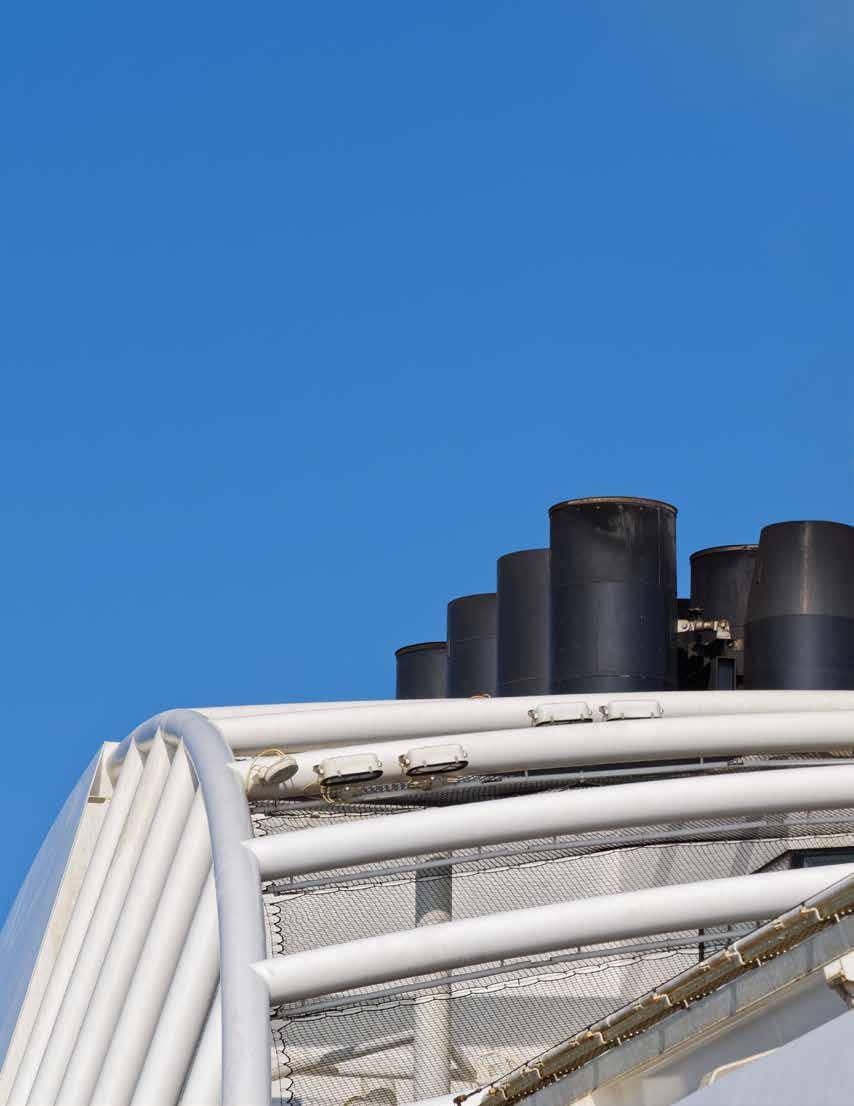
IMO forging ahead with decarbonisation plan


The IMO will meet in October and hopes to gain sufficient support to adopt the its mid-term GHG measures that will be the first global GHG emissions levy agreed by any industry worldwide. Neil Henderson , senior executive, Gard explains how they work and what is at stake
In April 2025, at MEPC 83 [Marine Environment Protection Committee] , the International Maritime Organisation (IMO) member states reached agreement on the first global greenhouse gas (GHG) emissions levy for any industry.
This comprises a global fuel standard, financial penalties and incentives, as well as a fund to support decarbonisation initiatives with the aim of achieving the IMO’s 2023 GHG strategy of net zero by, or around, 2050.
The proposed new chapter 5 to MARPOL Annex VI provides that the GHG intensity of all energy used by vessels - referred to as the GHG Fuel Intensity (GFI) - is to be progressively reduced. The measures will start from 1 January 2028 and apply to vessels of 5,000gt or above.
While there was great acclaim on the achievement of reaching agreement in April, the GFI mid-term measures are not yet a certainty.
The initial agreement saw the relatively unusual use of a majority vote, rather than unanimity among IMO member states, with both abstentions and a significant number voting against.
The US delegation to the IMO refused to take part in the negotiations and issued a formal statement to the effect that countries adopting measures that affected US ships would be subject to retaliatory measures.
Since then, it has been reported that the US administration has threatened tariffs, visa restrictions and port levies for member states that voted in favour.
The MEPC will reconvene at an Extraordinary Session in October to adopt the proposal. This requires a two-thirds majority of the 108 member state parties to MARPOL Annex VI, a total of 73 states.
The majority voting in April saw 63 in favour, 16 opposed and 24 abstentions; so, work will have to be done before October to secure the necessary additional support.
THE BASICS OF THE GFI
The GFI mid-term measures agreed are similar to but broader than the FuelEU Maritime Regulation.
The GFI is the GHG intensity of the energy used onboard a ship. This comprises the energy from the fuel, from other sources, eg wind-assisted propulsion and savings in emissions from technology such as carbon capture.
The GFI is a measure of the grams of CO2 or CO2 equivalent, ie methane, nitrous oxide, per megajoule of energy; the unit is gCO2e/MJ. This is the same as the measure used for FuelEU Maritime.
Each energy source, whether it be fuel or alternative energy, is given a well-to-wake (WtW) figure for the GHG emissions. These are the GHG emissions throughout the lifecycle of the energy source: production - transportation –consumption onboard.
The GFI figure for each fuel or energy source will be calculated by an IMO-recognised Sustainable Fuel Certification Scheme.
Starting from 1 January 2028, there will be two trajectories of reductions in the permitted GFI levels as compared to a 2008 starting figure:
> The ‘base’ target which tracks the IMO’s base targets of a 20% reduction in GHG emissions by 2030 and 70% reduction by 2040; and,
> The ‘direct compliance’ target. This tracks the ‘striving for’ targets of 30% and 80% reductions, respectively.
The two target trajectories have been agreed up to 2035 only, other than a single base target reduction of 65% for 2040. The targets for the period 2026 to 2040 must be agreed by 1 January 2032.
By March each year, the shipowner will report the weighted average GHG intensity of the energy used onboard the vessel ocompared to the previous calendar year. This is the vessel’s attained GFI.
The shipowner will also report the vessel’s annual GFI compliance balance. This is the difference between the direct compliance target and the vessel’s attained GFI, multiplied by the total energy used that year. It will be a positive or negative figure, measured in tonnes of CO2eq.
The reporting obligation applies to all vessels of 5,000gt or above, subject to several exceptions: ships operating only in the waters of their flag state; ships not using mechanical propulsion; FPSOs, FSUs, drilling rigs and semi-submersible vessels.
If the vessel meets the more ambitious direct compliance target, the shipowner will receive surplus units (SUs) for each metric tonne of CO2eq below the target. These can be ‘banked’ for future usage or transferred to another noncompliant vessel.
If the vessel only meets the lesser base target, the shipowner will have to purchase remedial units (RUs) from the IMO, at an initial cost of US$100 each. If the vessel fails
“The US delegation to the IMO refused to take part in the negotiations and issued a formal statement to the effect that countries adopting measures that affected US ships would be subject to retaliatory measures.”
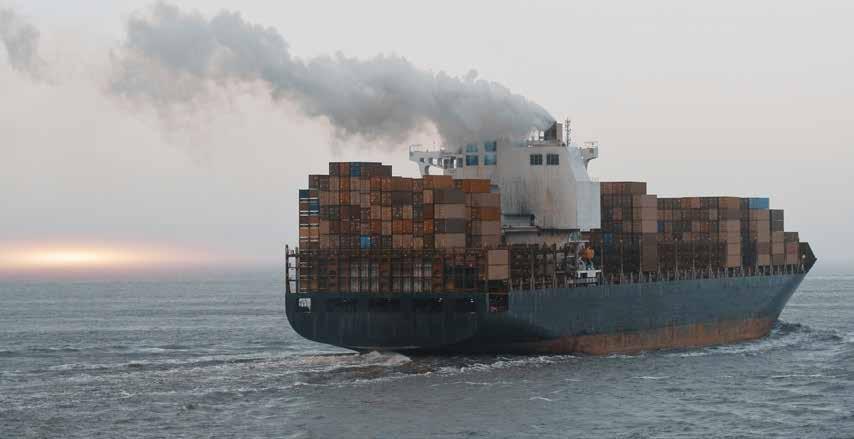
“The GFI is the GHG intensity of the energy used onboard a ship. This comprises the energy from the fuel, from other sources, eg wind-assisted propulsion, and savings in emissions from technology such as carbon capture.”
to meet the base target, the shipowner will have to purchase RUs from the IMO at a cost of US$380 each, or SUs from a compliant shipowner.
The first RUs will be purchased in 2029, for any negative balances in 2028. The cost of the RUs will increase from 2031 to incentivise shipowners to switch to compliant fuels or adopt alternative compliant energy sources (such as onboard carbon capture).
IMO NET-ZERO FUND
The money that the IMO receives for the RUs will be used to create the IMO net-zero fund. This is anticipated to be used for two principal purposes. One is to incentivise the use of zero or near-zero (ZNZ) fuels. To qualify as a ZNZ, the fuel must have a GHG intensity of 19gCO2eq/MJ or less (up to the end of 2034) and 14gCO2eq/MJ or less from 2035.
E-methanol and e-ammonia are likely to achieve these figures, assuming fully renewable electricity is used to produce them. The financial rewards for the use of ZNZ fuels will be decided by 1 March 2027.
The other purpose is to promote a just and equitable transition in maritime decarbonization efforts, particularly
of small island developing states (SIDS) and least developed countries (LDCs). This is expected to include R&D and production of ZNZ fuels and other energy sources, associated infrastructure, training, technology transfer, capacity building and fleet renewal and upgrade.
INDUSTRY RESPONSE
The mid-term measures agreed have been broadly welcomed by the shipping industry, although there have been concerns expressed that the proposal adopted introduces a two-tier track to decarbonisation. It has been suggested by some commentators that this could result in slower overall reductions in GHG emissions as shipowners chose to achieve compliance with the Base target and then pay the lower $100 RUs rather than invest in equipment or fuels to achieve the direct compliance target.
Another issue identified is that the measures do not necessarily generate predictable or stable revenues, nor certainty for financing an equitable transition. The IMO netzero fund is likely to receive approximately $10bn- $12bn a year initially, which many believe is less than what is needed to achieve an effective and just transition.
While there are some negative sentiments, it should not be overlooked what a historic achievement this is. So long as they are formally adopted in October 2025, the IMO’s mid-term measures will be the first global GHG emissions levy agreed by any industry.
They ought to provide a clearer pathway to decarbonisation and encourage the maritime industry to invest in the necessary vessels, equipment, infrastructure and energy sources.

Launched in 2022 in New York, Energy Insurance Americas is twinned with Energy Insurance London. With a strong focus on the burgeoning renewables market in the US and also covering Oil & Gas and new technologies, Energy Insurance Americas was re-located to Houston in 2023, where it was extremely well supported. Unlike its London twin, the event sees energy companies participating directly due to them being domiciled there.
PROUD SPONSORS


JOEY DRYDEN, PRESIDENT, HOUSTON MARKET, IMA
FRASER MCLACHLAN, CHAIRMAN, TMGX
MICHAEL PERRON, VICE PRESIDENT, RENEWABLE ENERGY MARKET LEAD, FM RENEWABLE ENERGY
JOHN KRUPCZAK, HEAD OF US ENERGY AND CONSTRUCTION, LIBERTY MUTUAL
RICHARD BLADES, VICE CHAIRMAN AND HEAD OF HOUSTON OFFICE, HOWDEN US
40-10 00:
STEPHANIE CROCHET, NATIONAL ENERGY PRACTICE LEADER, IMA
GERRY FAHRENTHOLD, SENIOR VICE PRESIDENT, HEAD OF US AND CANADA, SCOR
NAVID ZANGANEH, ASSOCIATE, THORNTON TOMASETTI
ALEX KAZANTSEV, ACCOUNT EXECUTIVE LEAD, ENERGY AND MARINE PRACTICE, ALLIANT SPECIALTY IAIN MAC BEAN, EXECUTIVE ADJUSTER, INTEGRA TECHNICAL SERVICES
MATT JETT, SHAREHOLDER, HALL MAINES LUGRIN
RAFAEL
RACHEL
ROUNDTABLE


Critical infrastructure: Interconnectors’ role in the energy transition

By Joe Dutton , energy innovation lead at AXIS
The transition to a cleaner, more sustainable and reliable energy supply demands longterm investment, unwavering commitment, strong leadership and robust infrastructure.
A key infrastructure tool in this is electricity interconnectors that connect the grids of neighbouring countries or sections of a grid within a country.
As diverse sources of electricity feed the grid and renewable supply grows, global demand for interconnectors is increasing. For the insurance industry, understanding the role and risks of interconnector projects is crucial as we develop the specialty risk and insurance solutions that support energy resilience and the transition to a low-carbon economy.
LONG-DISTANCE ENERGY TRANSMISSION
Interconnectors, whether onshore, offshore, or both, typically use high voltage direct current (HVDC). This technology enables the efficient and flexible transmission
of large amounts of electricity over long distances, outperforming alternating current (AC) systems. HVDC is also used to connect different sections of a grid within a country and to export electricity from offshore windfarms to onshore grids.
Innovation is inherent in supporting the energy transition. The development of multipurpose interconnectors (MPIs), also known as hybrid interconnectors, enables offshore windfarms to feed directly into a subsea interconnector.
MPIs allow electricity to be traded between markets or sent from the windfarm to either country, maximising project efficiencies and supply. By 2030, it is estimated that one-third of EU offshore wind capacity will be connected to a hybrid interconnector asset.
CROSS-BORDER INTERCONNECTION
Global grid investments focus on upgrading existing networks to accommodate a more decentralised power grid with intermittent renewable energy sources. Again, interconnectors play a crucial role in these upgrades, offering four key benefits:
• Energy security;
• System flexibility;
• Decarbonisation; and,
• Lower wholesale electricity prices
ENERGY SECURITY
Interconnectors enhance energy security by enabling countries to supplement domestic electricity generation with imports from neighbouring markets. In the UK, its nine interconnectors, connecting to six countries, supplied more than 11% of its power in 2023—more than solar and biomass. Their importance was highlighted when imports were crucial in addressing supply concerns on days with low wind generation and high demand due to cold weather. The 1.4GW Viking Link interconnector between Denmark and the UK was completed in 2023 and is the world’s longest land and subsea interconnector at 756km. The UK’s newest interconnector, Greenlink to Ireland, went live in January 2025.
While interconnectors bring significant advantages and strengthen energy security, they also create risks and challenges and have been targeted amid geopolitical tension and conflict.
SYSTEM FLEXIBILITY
Interconnectors help grids manage the intermittency of renewables by exporting electricity during high renewable energy production and importing when output is low, supporting the balance of supply and demand. This flexibility reduces the need for curtailment, where generators are paid to reduce output due to grid congestion or low demand. Connecting across a wider region can also reduce the impact of local weather conditions and geographic variability on renewables output.
DECARBONISATION
System flexibility through connecting to other grids supports decarbonisation by allowing more renewable energy to be connected to the grid. This ability to export helps address the variability in renewable generation and provides an alternative route to market for renewables generators. This also allows imports from countries with cleaner power supplies, such as nuclear power from France or hydro from Norway. Planned projects like X-Links (Morocco-UK) and GREGY (Egypt-Greece) would import clean power from North Africa into Europe.
LOWER WHOLESALE ELECTRICITY PRICES
The direction of electricity movement across the interconnector is generally determined by price: electricity flows from a cheaper market into a premium market with higher prices. This can lower wholesale power prices in the importing market, saving money on energy costs long term. The ability to import electricity can also help avoid overbuilding domestic power generation capacity that is more expensive than importing.
RISK CONSIDERATIONS
As contemporary interconnector projects grow in scale and complexity, they encounter various risks during development and operation.
“Managing the multiple risks associated with the rapid expansion of interconnector projects requires informed insurance partners that understand the complex risks and opportunities they bring.”
• Costs: Offshore projects can take more than a decade to complete from planning to operation, with delivery times growing as projects have higher capacities, contributing to rising costs. The UK’s Viking Link cost £1.7bn, while the 1.4GW NeuConnect to Germany is expected to reach £2.4bn when complete.
• Environmental: Offshore construction involves unique considerations, including seabed conditions, geology and weather. High amounts of unexploded ordnance (UXO) on the seabed from historic conflicts also present a risk.
• Human: Contractor error is a key risk, with significant damage from mishandling cables during transport, storage and installation. In congested environments like the North Sea, crossings with other infrastructure like oil pipelines need careful consideration.
• Operational: Once in use, interconnectors face risks such as damage from anchors and vessels in busy shipping areas. Reported incidents of anchor drag severing interconnectors are increasing as more projects are built.
• Geopolitical: Interconnectors are increasingly becoming targets amid political instability. In December 2024, an oil tanker was suspected of deliberately damaging Estlink 2 from Finland to Estonia in the Baltic Sea. Countries like Germany and the UK have boosted their underwater naval capabilities to protect marine infrastructure, while NATO has established the Maritime Centre for the Security of Critical Undersea Infrastructure unit.
SPECIALIST APPROACH
The energy transition and energy security hinge on a steadfast commitment to investing in transmission infrastructure to distribute clean power. While domestic grid expansion and upgrades to connect renewables are at the core, cross-border interconnectors are less visible but equally important.
Managing the multiple risks associated with the rapid expansion of interconnector projects requires informed insurance partners that understand the complex risks and opportunities they bring. Specialist insurers and brokers that take a long-term view of risk are essential in delivering elevated solutions to address the unique challenges of the energy transition.
Navigating complex waters

Kevin
Healy, senior underwriter, British Marine,
explains how its enhanced P&I solutions for specialist, offshore and construction operators helps plug potential
coverage gaps
In the complex and evolving world of marine specialist, offshore and construction operations, traditional Protection and Indemnity (P&I) insurance often falls short.
Standard P&I policies typically exclude key areas such as contractual liabilities, specialist operations, extended towage and salvage activities.
Recognising these limitations, our team has developed a comprehensive bolt-on solution that ensures seamless coverage for offshore service providers.
This bolt-on product, offered in two tiers, Offshore Extension 1 and Offshore Extension 2, sits alongside the standard P&I policy:
• Offshore Extension 1 covers contractual liabilities and specialist operations
• Offshore Extension 2 adds extended towage.
This modular approach allows our customers to tailor their coverage based on operational needs, ensuring that liabilities falling outside the scope of standard P&I are still fully protected.
The evolution of coverage in this area reflects a broader industry trend. Many P&I providers, particularly those outside the International Group, have introduced similar enhancements to stay competitive.
These developments often stem from historical exclusions in standard policies, such as those prompted by a pile driving
incident in the Chicago river in the early 1990s, which led to significant flooding and a reassessment of high-risk activities.
As a fixed premium insurer we have not only aligned with these industry norms but also taken a proactive stance by developing robust extensions tailored to the complex demands of specialist, offshore and construction operations.
We know that one of the most significant challenges for operators in these complex fields is managing contractual liabilities.
These contracts often impose obligations that exceed the protections offered by basic P&I. Underwriters address this by reviewing client contracts to identify liabilities that fall outside standard coverage before tailoring additional protection(s) to ensure any gaps are covered.
This proactive, consultative approach ensures that customers are not left exposed when entering into complex agreements with oil majors, wind farm developers, or other stakeholders.
WRECK REMOVAL
Wreck removal is another prime example of a frequently overlooked contractual liability. While not a statutory requirement, most offshore contracts mandate wreck removal if a vessel becomes a casualty and interferes with future operations.
This is particularly relevant in wind farms or oil and gas fields, where downtime can be costly. A contractual extension ensures that such obligations are covered, providing peace of mind to operators.
The waiver of rights to limit liability in law is also an issue we encounter. In regions such as the Middle East and Latin America, for example, contractors often require service providers to waive these rights, contradicting the principles of standard P&I.
Bolt-on cover addresses this by absorbing the additional risk, ensuring insureds remain protected even under stringent contractual terms.
Specialist operations such as dredging, construction and seismic work are also excluded under standard terms due to the potential for seabed interference and third-party damage.
Bolt-on cover allows customers to buy back these exclusions, ensuring comprehensive protection for high-risk activities. Underwriters, drawing on deep sector experience, evaluate each operation to determine the appropriate level of cover.
Extended towage presents another unique challenge. Standard P&I terms typically require a formal contract and a knock-for-knock agreement to limit liability. However, commercial realities often require towing without a contract. Cover can be included for such scenarios, ensuring customers are not penalised for operational flexibility.
Our strength lies not only in our carefully developed products but also in our people. The underwriting team is comprised of experienced experts focusing on specialist P&I clubs and providing insurance for a diverse array of vessels,
including those operating beyond standard cargo transport.
This deep understanding of the sector allows us to stay ahead of industry trends. We review client contracts continuously and engage with stakeholders to ensure products evolve with the market. For instance, as oil and gas prices experience volatility, the liabilities associated with oil majors vary in response and we adapt in turn to keep our customers protected.
WIND OPPORTUNITIES
Looking ahead, the wind energy sector is a key area of growth. Driven by government initiatives and environmental pressures, the demand for wind farm construction is increasing rapidly.
Recognising the long-term potential, many traditional oil and gas vessel operators are diversifying into this space. Product ranges can be expanded to include contractor’s risks and other relevant covers in response, ensuring these operators are supported as they transition into new markets. We are committed to working closely with small and specialist offshore operators. By avoiding shared liabilities with larger tonnage vessels and offering bespoke cover, we provide a compelling proposition for customers seeking comprehensive, reliable protection. With a strong track record, deep expertise and investment in innovative products, We are navigating new waters with confidence and helping our customers do the same.
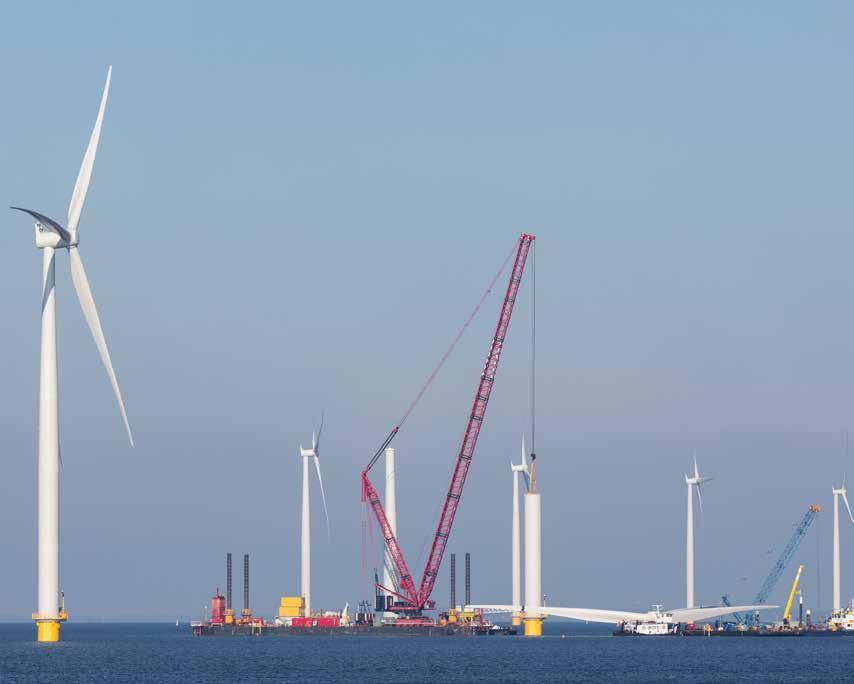
“Looking ahead, the wind energy sector is a key area of growth. Driven by government initiatives and environmental pressures, the demand for wind farm construction is increasing rapidly.”
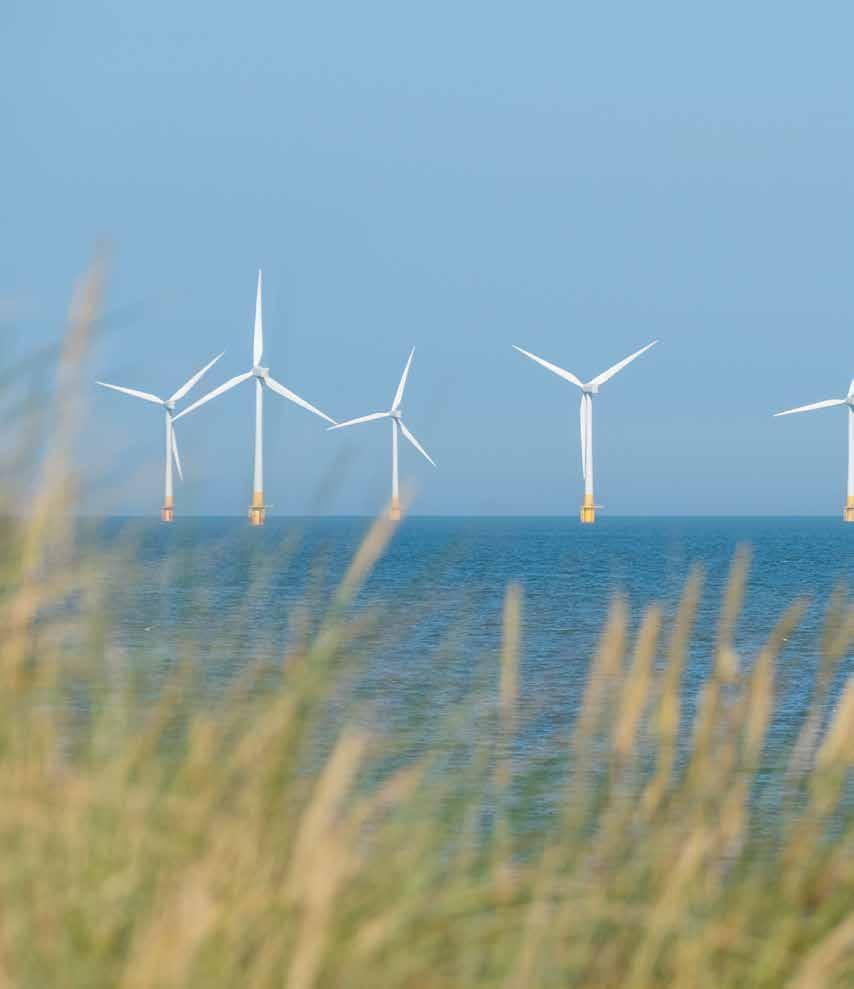
OFTO structure exposes to higher CBI losses

James Mulligan , senior underwriter at Tokio Marine GX (TMGX) analyses the cause of rising CBI losses in the offshore wind sector and the impact and lessons of the UK’s unique offshore transmission owner regime
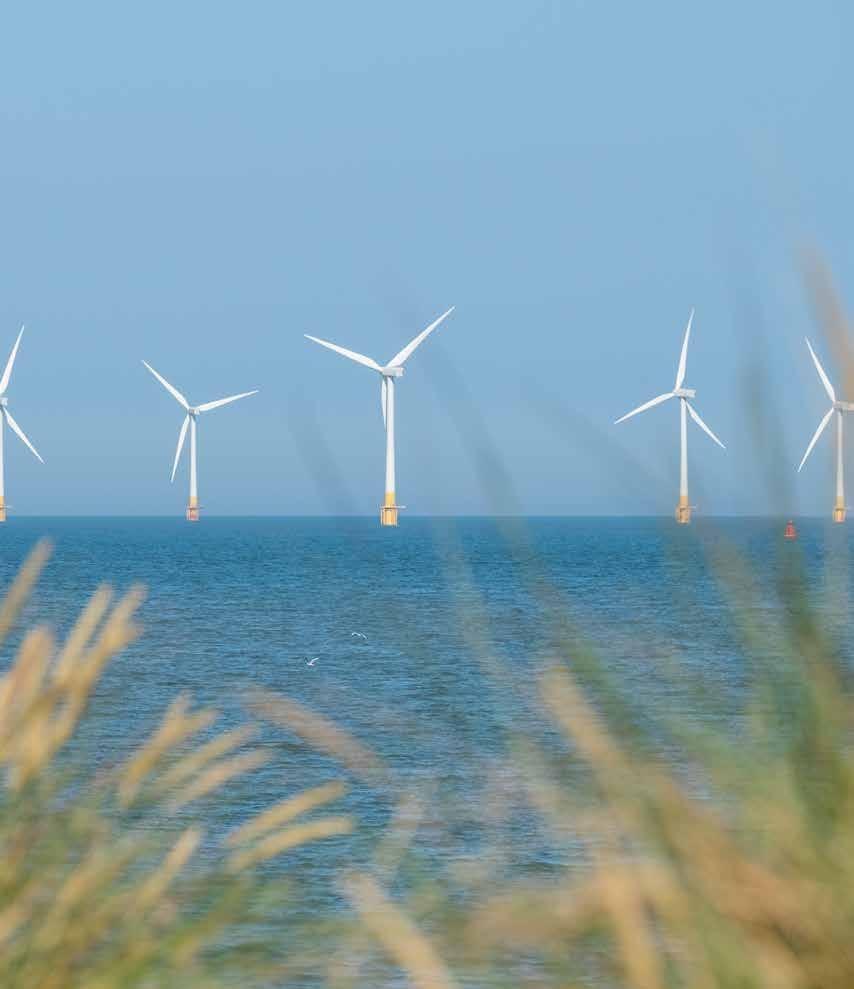
Contingent business interruption (CBI) claims in offshore wind are becoming more frequent and more financially significant. Nowhere is this more evident than in the UK, where the unique offshore transmission owner (OFTO) regime is creating additional layers of complexity.
By separating ownership and operation of transmission assets from wind farm developers, the regime can create diverging priorities when a loss event occurs, with serious
consequences for repair timelines, claims complexity, and revenue.
Broadly, there are three main models for transmission ownership in offshore wind globally:
1. In the UK, developers construct the transmission infrastructure and are then required to sell it to a licensed OFTO. This owner then becomes responsible for operating and maintaining the assets;
2. In many European countries, the grid operator owns and manages the transmission system from the outset and is often subject to public service obligations and guaranteed performance standards; and,
3. A third approach seen in other regions allows the wind farm owner to retain full ownership of the transmission line all the way to the onshore grid connection point.
Each model shapes how CBI risk is distributed and managed and the UK’s regime has arguably introduced more friction to the process than necessary.
RISK SEPARATION
What makes the UK OFTO model challenging is the way it separates financial risk from operational responsibility. Once a transmission asset is sold to an OFTO, the wind farm operator is no longer in control of the maintenance or repair of the asset.
The OFTO earns regulated revenue which is closely linked to asset availability, rather than solely the amount of energy the wind farm produces.
In the event of a failure, such as a damaged export cable, the wind farm developer suffers a major revenue hit while the OFTO has a limited financial incentive to expedite repairs. This can result in differing priorities, meaning that delays to repair become more likely.
This misalignment has led to a notable concentration of CBI claims in the UK market. Although the causes and frequency of offshore transmission failures are similar worldwide, typically involving damage to export cables, the operational response differs greatly depending on who owns the infrastructure.
In European systems, urgency to repair is created by the financial penalties if performance standards are not met. In the UK, the structure of ownership often results in a lag between outage and resolution, especially if disagreements arise over the scope or method of repair, based on the costs.
WHAT’S DRIVING RISING CLAIMS
As offshore wind farms grow in capacity and distance from shore, the revenue tied to a single transmission cable has increased substantially.
A cable outage that might once have affected a modest amount of power now has the potential to halt hundreds of megawatts of generation. This shift means the financial impact of a single incident has grown rapidly, even if the underlying technical cause remains unchanged.
To exacerbate this problem, many projects still use just one or two offshore substations, even as wind farms grow larger. This creates single points of failure with little or no backup. In today’s environment, a single damaged cable can result in daily revenue losses which are multiples of what the industry faced just a decade ago.
At the same time, repair work on offshore wind projects is becoming more complicated and expensive. Larger wind farms are often built further from shore and in deeper water, which means repairs need specialist vessels, equipment and skilled teams. These resources are costly and not always

“In European systems, urgency to repair is created by the financial penalties if performance standards are not met. In the UK, the structure of ownership often results in a lag between outage and resolution, especially if disagreements arise over the scope or method of repair, based on the costs.”
easy to access.
If a transmission failure happens in autumn, rough weather can make repairs impossible until the following spring. This seasonal delay can turn a short outage into a long and expensive campaign, creating major challenges for both insurers and developers.
A further complication lies in the practical logistics of repairs. Wind farm operators often have limited visibility or involvement in the damage assessment and reinstatement planning. They depend on the OFTO to make key decisions and to source specialist resources such as cable jointing teams, vessels and spare parts.
Disputes can arise over the choice of equipment or methods, for instance, whether to use OEM joints and teams, or universal components and third-party contractors, each with different implications for warranties and repair speed.
This lack of control is central to the difficulty in insuring this CBI risk. Underwriters are being asked to cover substantial potential losses for assets that their insureds neither own nor manage. Assessing the quality, condition and operational risk of infrastructure is challenging under these conditions.
REDUCING THE IMPACT
Several potential solutions have been suggested, but none are without challenges. One proposal is for government intervention to reform the OFTO regime itself, ideally creating a structure that incentivises faster and more coordinated repair responses. However, regulatory reform is often a slow and uncertain process.
A more practical near-term solution could involve wind farm developers negotiating contractual arrangements with OFTOs to secure cooperation and speed in the event of an outage. These agreements could set expectations for repair timelines and cost-sharing, giving operators a greater degree of certainty.
Another possible approach is to include defined extra expense coverage within CBI policies, allowing developers to access funds quickly for urgent repair costs. However, such provisions would require careful drafting and agreement between insurers and OFTOs, especially where large upfront deposits are needed to secure vessels or equipment.
This solution would also require clear cooperation between insurers on both sides as well as developers and OFTO’s to ensure the transfer of risk between the four parties is fully understood or it risks slowing the process further as parties end up in contractual debates around where coverage should land after the claim event.
Perhaps the most promising strategy lies in fostering collaboration. Operators that maintain strong relationships with their OFTOs, whether formally through contracts or informally through proactive engagement, tend to fare better when an incident does occur.
“Repair work on offshore wind projects is becoming more complicated and expensive. Larger wind farms are often built further from shore and in deeper water, which means repairs need specialistvessels, equipment and skilled teams.”
An open and collaborative approach can support faster decision-making, shared understanding of repair priorities, and smoother coordination of logistics. Insurers can play a valuable role here by encouraging and even facilitating such collaboration in the underwriting process.
There is also a case for deeper alignment across all parties, including the OFTO’s own insurers. If a wind farm’s CBI insurer and an OFTO’s property damage insurer can work together during a claim, they may be able to overcome shortterm cashflow barriers that otherwise stall repairs.
Some OFTOs rely on investor capital to fund repairs and this can be slow to access. Coordinated insurance support could offer a temporary bridge, provided all parties agree on the plan and the associated costs.
LESSONS FOR EMERGING MARKETS
Emerging offshore wind markets would be wise to take lessons from the impact of the UK’s regime. The separation of responsibilities and incentives has proven to be a source of inefficiency and unnecessary risk.
Policymakers designing their own offshore regimes may benefit from looking at the more integrated approach taken in parts of Europe, or from the maturity of offshore oil and gas frameworks where operational risk and financial exposure are more closely aligned.
In all cases, a structure that encourages cooperation and shared accountability is more likely to deliver the resilience needed as offshore wind continues to grow.
Ultimately, the insurance market can support this evolution by pushing for clearer policy language, encouraging pre-loss planning and rewarding operators that build strong relationships across the value chain. As offshore wind enters a new phase of scale and complexity, managing contingent risks will demand a shared commitment to faster, more coordinated responses for the benefit of all parties involved.
From tradition to opportunity: How Greece’s maritime stories inspire a new generation
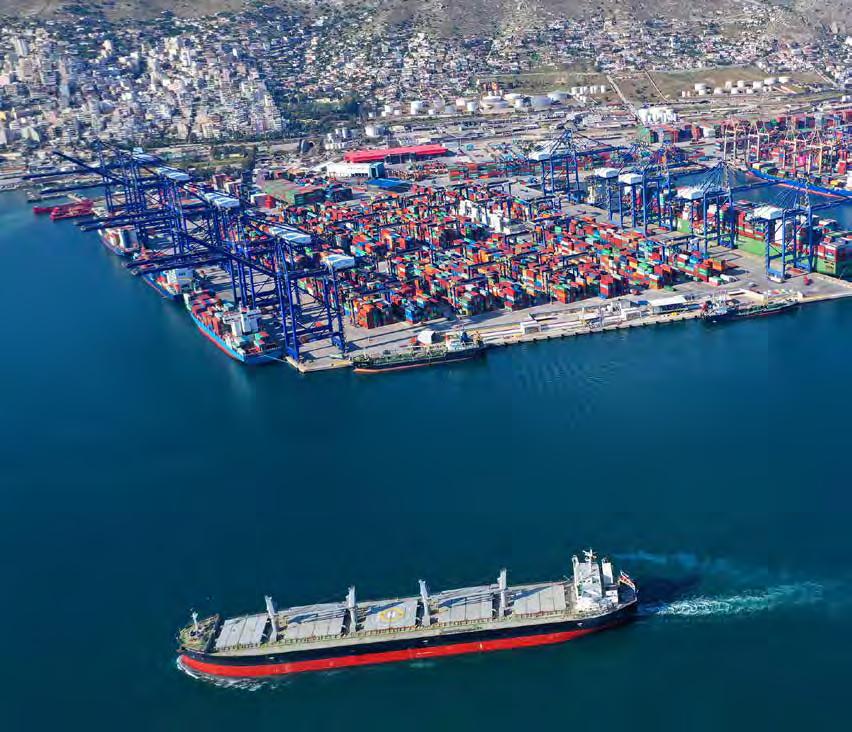

By Maria Kostala , claims executive, The American P&I Club - Piraeus
There is something about the sea that captures the imagination. For many Greeks, it’s a part of who they are. My parents come from Chios, an island closely tied to the maritime world.
Growing up, I often heard stories from my father, whose own father had also served at sea, and from my uncle, a former mariner and maritime high school teacher. Their stories afforded me a connection to a world that seemed adventurous, challenging and deeply important.
That connection is part of a living tradition, one that continues to shape Greece’s role as a global shipping leader and offers younger generations exciting career opportunities with potential to grow and evolve.
WHY PEOPLE MATTER
Greece’s maritime industry makes up about 7% of the
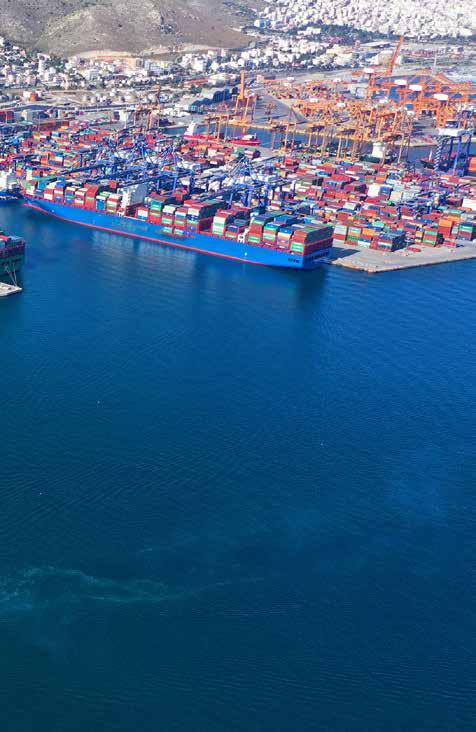
“Today’s maritime industry embraces technology, from green practices to advanced digital tools. By integrating these into training, Greece’s maritime schools can prepare recruits for tomorrow’s needs. Blending technology with traditional maritime values, Greece can build a workforce that is both skilled and focused in teamwork, resilience and responsibility promoting sustainability and improvement.”
WHERE TRADITION STILL THRIVES
In places like Chios, as well as Oinousses, Andros and Syros, maritime life still flourishes. Students there often choose specialised maritime education and proudly go onboard. However, the seafaring spirit isn’t limited to these islands. Young talent from all over Greece can and should join the industry, ensuring the maritime tradition continues to thrive.
HOW TO KEEP THE TRADITION ALIVE
1. Start early: Engaging Greeks through education
country’s economy supporting thousands of jobs, both at sea and ashore. But behind every vessel are the people who run it: crew, masters, engineers, officers, cadets, those who keep everything moving smoothly.
Greek seafarers often fill the highest ranks onboard.
These roles are well-respected and offer attractive financial rewards, which is important especially today, when many face economic uncertainty. This respect and stability make maritime careers appealing - something of which more young Greeks should be made aware.
The journey to a maritime career can begin early. To spark interest, Greece could introduce maritime-themed programs and promote them via social media and platforms engaging young people. Hands-on experiences, including but not limited to school visits to shipping firms, marine academies, ports, vessels, or workshops about marine life, can give students a taste of life and work at sea.
Additionally, partnerships between schools, marine academies and shipping firms can show students that a maritime career isn’t just about travelling. It can also lead to shore-based roles in operations, logistics, chartering, claims, insurance, just to name a few. While some programmes like these already exist, expanding them to include more companies and reach more students or seafarers would deliver huge benefits. These programmes should clearly present the myriad options available in the maritime world, both onboard and ashore.
2. Create clear pathways: From education to career progression
Once students are engaged, the next step is to provide clear pathways from education to employment. Greece can expand and strengthen maritime academies by promoting internationally recognised certification programs, allowing graduates to work worldwide.
Academies should work closely with shipping companies to offer internships and hands-on training, depending on students’ preferences or availability. Existing practical experience could become more widespread, providing valuable real-world skills and opening doors to future employment. This way young people will better understand the opportunities available to them once they decide to go onboard.
3. Support training and career development
Training does not end at graduation; it continues throughout a seafarer’s career. By investing in centers offering the latest maritime technologies and updates on regulations, legislation, or the industry’s trends, Greece could give young people tools to stay at shipping’s cutting edge and meet peers to share knowledge and support each other.
Equally important is soft skills training. Resilience, adaptability, teamwork and responsibility are values passed down through maritime generations. These qualities make good mariners, and ongoing development helps the next generation face challenges, at sea, ashore and in life.
4. Offer practical support: Scholarships, mentorship and resources
Making maritime education accessible is key. Greece can offer more scholarships, lower cost living options and even more sponsored internships, funded by shipowners, private individuals, or the state. Financial support exists and helps remove barriers for young talent who might otherwise struggle to afford maritime education but could be increased to assist more people.
Mentorship programmes could pair experienced mariners with students or recruits, offering advice on technical skills and managing emotional and mental challenges of life at sea. The strong camaraderie common to the maritime industry can be nurtured through peer support and mentorship platforms either in person or even online if necessary to make it work. Volunteers could play a big role in helping young seafarers navigate this rewarding but demanding career.
5. Enhance work-life balance and well-being
To attract and retain young people, Greek companies could offer options for shorter contracts, enabling seafarers to visit home and family more often while respecting work realities. Providing free internet access onboard helps crew stay connected with loved ones, keep up with both global and local news, as well as enjoy some downtime, important for morale during long voyages.
“Greece’s maritime industry makes up about 7% of the country’s economy supporting thousands of jobs, both at sea and ashore.”
Improved telemedicine services onboard can provide timely medical care, promoting physical health far from shore. Establishing efficient mental health support systems tailored to seafarers’ unique challenges can help manage stress, build resilience and maintain emotional well-being while eliminating the stigma often associated with mental health.
6. Highlight the benefits: Economic rewards, stability, respect, and global experience
Life at sea offers rewards that young people might not always realise. Maritime careers provide competitive pay, job stability, growth and respect. For those willing to travel, financial and career benefits can be significant and these should be clearly communicated.
Working at sea also opens doors to global travel and cultural exchange, not just practically working in different countries, but also working with diverse people. The sense of international connection can motivate young people wanting to explore the world beyond that which they know.
7. Use technology to enhance training and adapt to change Today’s maritime industry embraces technology, from green practices to advanced digital tools. By integrating these into training, Greece’s maritime schools can prepare recruits for tomorrow’s needs.
Blending technology with traditional maritime values, Greece can build a workforce that is both skilled and focused in teamwork, resilience and responsibility promoting sustainability and improvement.
CONCLUSION: KEEPING THE SEA IN THE STORY
Maritime strength isn’t just about fleet size or tonnage; it is also about the people on board. To keep the tradition alive, Greece can invest in connection and support of young generations showing that the sea can offer a future full of purpose and opportunities.
My own connection to the industry didn’t start with numbers or reports but rather with stories told around the family table during summers in Chios, by those who had lived and worked at sea. I believe many others could find the same inspiration, given the chance.
And who knows? Maybe one day, we will be the ones telling our own maritime stories to the next generation, inspiring them to join the wave.
AI-firstmarinerisk:turning
dataintomarketadvantage

Farah Bukhari , senior data analyst at Concirrus, with a background in data and analytics within the specialty London insurance market, delves into the most disruptive trends impacting the marine industry and how data and AI is at the forefront of the future of risk
Artificial intelligence (AI) is no longer a future concept for the maritime industry; it is already here. From underwriting desks to ship bridges, AI-native solutions are transforming how risks are assessed, managed and prevented. For insurers, brokers, shipowners and service providers, the question has changed. It is no longer about whether AI can make a difference, but how quickly it can be deployed to deliver measurable outcomes.
This comes at a time of disruption. Regulation, cost pressures, sustainability demands and shifting client expectations are all reshaping the market. The winners will be those who turn fragmented data into fast, trusted intelligence — creating advantage in an increasingly competitive environment.
FROM DISRUPTION TO OUTCOMES
The drivers are clear. Regulators want real-time transparency on emissions, safety and cyber resilience. Insurers and shipowners face tighter margins, making efficiency a strategic imperative. Cargo owners and consumers are asking sharper questions about accountability. Meanwhile fleets are generating terabytes of IoT (internet of things) and
“The greatest impact of AI is the shift from reactive problem-solving to predictive prevention.”
sensor data that too often remain underused.
Legal and environmental frameworks such as International Maritime Organisation reporting rules and new cyber standards are raising the bar further, requiring evidence that is accurate, auditable and trusted. Climate exposures add another layer of urgency, demanding predictive models that go far beyond traditional approaches. Extreme weather events, rising fuel costs and geopolitical shocks only compound the pressure.
Against this backdrop, AI-first technology is not optional. It is the only way to move at the speed the market now requires. Companies that fail to adapt risk being left behind, while those that embrace AI-native solutions will create new standards for resilience and performance.
CLOSING THE EXECUTION GAP
The industry has no shortage of data. Insurers hold decades of loss histories. Shipowners generate vast operational records from sensors and logbooks. Brokers and service providers gather their own valuable datasets. The problem is not volume, it is fragmentation.
Too often, valuable intelligence remains trapped in legacy systems or in formats that cannot be easily downloaded. This slows decision-making and reduces the ability to anticipate risks.
AI-native platforms close this gap by integrating information into a single, accurate and holistic picture of risk. That means underwriters can price with precision in minutes, not days. Shipowners can prevent failures before they happen. Brokers can build stronger strategies backed by evidence. And service providers can evolve into enablers of connected intelligence across the ecosystem.
The result is a sector that can finally shift from hindsight to foresight, from reacting to yesterday’s claims to predicting tomorrow’s exposures.
CONFIDENCE THROUGH TRANSPARENCY
The marine sector has earned its reputation for caution, and trust must remain at the heart of AI adoption. Blackbox systems will not scale. Confidence only comes when predictions are explainable, transparent and validated against real-world outcomes.
This is why governance and transparency matter as much as speed and accuracy. AI that can show both what it predicts and why it predicts it gives stakeholders confidence to act. With certification and accountability built in, AI-first solutions deliver not just insight but assurance.
For an industry that must balance commercial performance with regulatory scrutiny and reputational risk, this assurance is crucial. Trust becomes a differentiator. In the future, credibility will not be measured only in loss ratios or profit margins, but in the ability to prove that AI-driven processes are ethical, secure and explainable.
PREDICTIVE, NOT REACTIVE
The greatest impact of AI is the shift from reactive problemsolving to predictive prevention.
For insurers, that means reducing uncertainty and supporting more consistent underwriting. Premiums can reflect real risk profiles in near real-time rather than relying on historical lag.
For shipowners, it means anticipating machinery failures, navigational hazards or compliance risks before they escalate. Instead of costly downtime, operators can optimise routes, reduce fuel consumption and demonstrate compliance with emissions targets.
For brokers, it means moving beyond placement to become trusted advisors. With data-backed insights, they can design tailored risk strategies, prove ESG performance and help clients meet tightening reporting requirements.
For service providers, it means building integrated offerings that connect IoT, telematics and compliance tools directly into the workflows of insurers and operators. By providing intelligence rather than just raw data, they strengthen their role in the ecosystem.
The outcome is clear. Costs go down. Downtime is reduced. Compliance becomes less of a burden and more of an opportunity to prove market leadership. Everyone in the ecosystem benefits.
THE SHIFT IN THE VALUE CHAIN
Before the rise of AI, insurers relied heavily on historical claims data and actuarial judgement, often pricing too slowly to keep pace with emerging exposures. Shipowners treated insurance as a necessary cost rather than an operational tool, with fleet maintenance largely reactive. Brokers competed mainly on placement and price, offering little scope for differentiation, while service providers delivered siloed solutions

“Companies that fail to adapt risk being left behind, while those that embrace AI-native solutions will create new standards for resilience and performance.”
with limited integration into broader risk strategies.
AI-first technology is changing this dynamic. Insurers are evolving into true risk intelligence partners, able to deliver sharper pricing, proactive loss prevention and alignment with tightening regulatory demands. Shipowners are shifting from reactive operators to data-driven managers, using predictive maintenance and emissions monitoring to reduce downtime and prove compliance. Brokers are moving beyond cost negotiation to become advisors with databacked strategies, while service providers are integrators, embedding IoT and analytics into platforms that support the
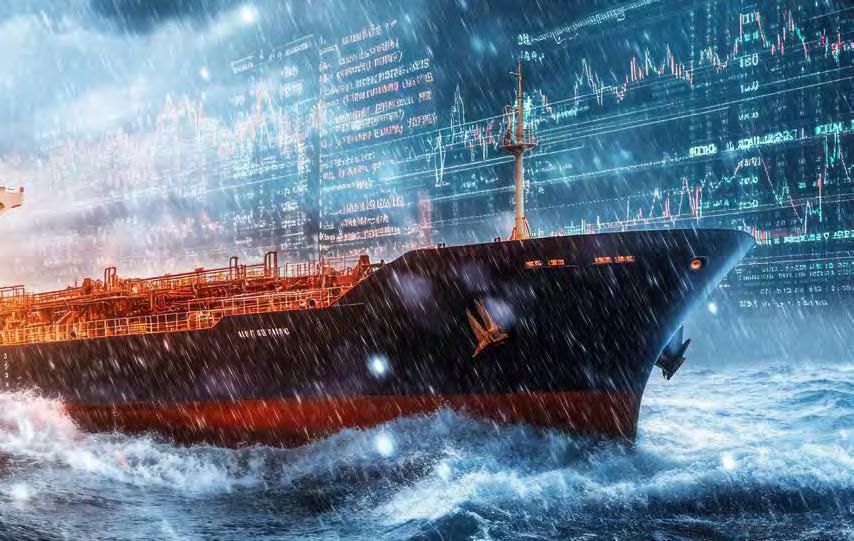
entire ecosystem.
The transformation is clear. Each link in the chain is becoming smarter, faster and more connected. Those who adapt early will not just keep pace with change; they will set the direction of the market itself.
A SHARED IMPERATIVE
Marine risk is not managed in isolation. The ecosystem only delivers when stakeholders share trusted actionable data. AI-first solutions provide the speed, accuracy and transparency needed to power that collaboration.
This is a shared strategic imperative. Insurers want to improve profitability and reduce claims. Shipowners want to avoid downtime and demonstrate compliance. Brokers want to deepen client trust. Regulators want auditable proof. All of these needs converge on one solution: intelligent use of data. Those who adopt now will not just improve efficiency or reduce losses. They will set the pace for the industry, defining new standards in trust, resilience and performance.
WHAT’S NEXT FOR MARINE?
The next stage of AI adoption will focus on speed, automation and seamless integration. Data extraction technology is already proving it can turn complex
submissions into structured, usable data in seconds. For underwriters, this will transform the quote-to-bind process, reduce turnaround times and allow pricing decisions at competitive speed.
Automated reporting will follow closely behind as regulators tighten requirements on cyber, governance and ESG (environment, social and governance) disclosure. AI-native platforms will generate audit-ready outputs at the click of a button. What once demanded days of manual work will become instant, auditable and trusted.
The long-term outlook is one of seamless integration. Operational data from fleets, compliance reporting and underwriting decisions will flow together into a single ecosystem of intelligence. That means not just faster decisions, but better ones — grounded in transparency and enriched by real-world performance.
LEAD WITH AI
The time for pilots and theory has passed. AI is proven, trusted and ready to scale. It does not replace human expertise, it enhances it.
For insurers, brokers and shipowners, the opportunity is clear. Adopt AI-first solutions today, turn complexity into clarity and lead the market with confidence.
Forward Thinking™ Foreign Exchange
Ballinger & Co. is authorised and regulated by the Financial Conduct Authority under the Payment Services Directive as an Authorised Payment Institution with registration number FRN 825771.
Ballinger & Co. is a leading specialist in Foreign Exchange. We deliver FX risk management strategies and trading services to corporates and institutions. Through superior pricing and execution, improved transactional efficiency and deep market knowledge we provide each of our clients with an essential competitive advantage. E: info@ballinger.co T: +44 (0) 20 3869 1800



As the maritime industry accelerates toward decarbonisation, electric propulsion and onboard battery systems are becoming central to the energy transition. From short-haul ferries in Scandinavia to emerging fully electric cargo vessels, lithium-ion battery technology is rapidly reshaping how ships move goods and people.
Batteries introduce a new layer of complexity to ship design, operations and safety management that various stakeholders need to understand.
This article explores the operational, technical, and failure risks of battery systems in electric ships. Drawing from forensic engineering principles, including CT imaging of battery degradation and post-failure analysis, we consider how real-world battery performance could shape underwriting, claims and design decisions in the marine insurance space.
BATTERIES AFLOAT: TRENDS AND TECHNOLOGIES
Electric ships are no longer niche projects; they are becoming a competitive necessity. Flagship examples like the Yara Birkeland in Norway or fully electric harbor tugs in ports across Asia and North America show practicable use when battery systems are paired with smart energy management and propulsion design.
Crowley Services has been operating eWolf, an all-electric 70-ton bollard pull tugboat in the Port of San Diego since June 2024, while the Port of Los Angeles has an all-electric tugboat from Arc Boat Company under construction. Incat has built Hull 096, a 130-m battery electric ferry to operate between Buenos Aires and Urugruay.
Most marine applications rely on lithium-ion chemistries, such as NMC (Nickel Manganese Cobalt) and LFP (Lithium Iron Phosphate), due to their high energy density and cycling capacity. Some vessels also integrate hybrid powertrain systems, combining battery storage with diesel generators or fuel cells to balance energy delivery.
In parallel, regulation is evolving. The International Maritime Organization, the European Maritime Safety Agency, and classification societies such as Det Norske Veritas and the American Bureau of Shipping are issuing updated guidelines on the safe integration of energy storage systems aboard ships. These include safety zones, fire suppression requirements, and battery management system (BMS) standards.
WHERE FAILURES BEGIN: MANUFACTURING AND CELL DEGRADATION:
Battery incidents on ships such as thermal runaway fires, system shutdowns or unexpected energy loss can, on occasion, be traced back to component level characteristics. High-resolution CT scanning and forensic teardowns have proven to be very useful tools in the investigation of battery cell specific investigation. For example:
Watts to waves: Battery risk and resilience in electric ships


Alfred Pettinger , (left) technical vice president, and Patrick Hudson , senior managing consultant, Engineering Systems Inc explain why forensic insights and system-level thinking are key to underwriting tomorrow’s electric vessels
> Foreign particle contamination during manufacturing can puncture separators leading to internal short circuits;
> Electrode misalignment or delamination weakens cell structure over cycles, especially under fluctuating marine load profiles; and,
> Electrochemical aging from calendar time, charge/ discharge abuse, or poor thermal control accelerates capacity fade and failure.
THERMAL RUNAWAY AND THE MARINE ENVIRONMENT
One of the greatest risks in battery-powered ships is thermal runaway, a chain reaction where heat buildup in a single cell cascades to adjacent cells, potentially leading to fire or explosion.
This is especially dangerous in enclosed ship compartments with limited venting or suppression systems. In marine environments, compounding factors include:
> Saltwater corrosion, which can affect casing integrity or connectors;
> Vibration and shock loads, leading to connector fatigue or pack movement; and,
> Charge instability during docking or rapid cycling, especially in ferry operations.
Unlike land-based battery storage systems, ships must manage thermal safety without sacrificing cargo space,
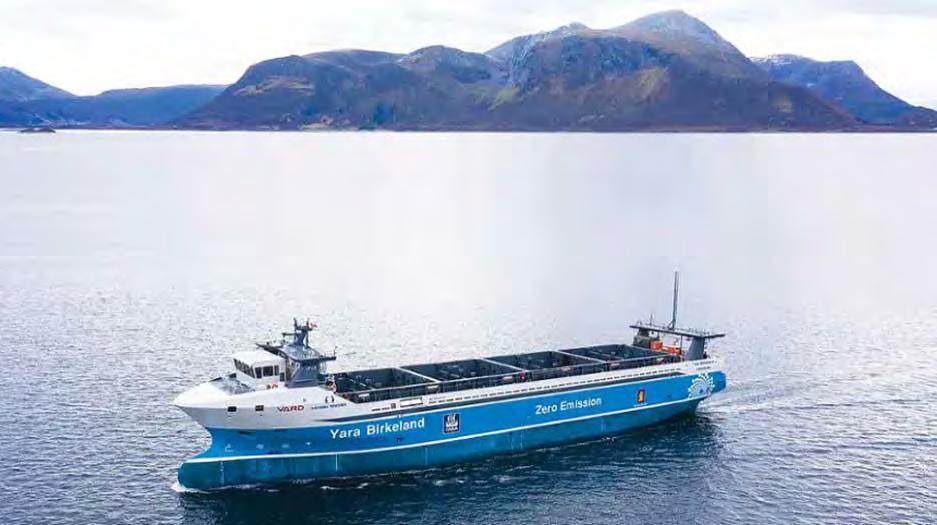
maneuverability, or redundancy. Battery packs are often densely packed, making fire containment difficult once failure begins.
LESSONS FROM THE LAB
Forensic engineers apply structured root cause analysis to determine malfunctions and how to prevent them. Lithiumion cells are efficient and versatile, but their failure modes can be consequential. CT scanning of damaged cells reveals how punctures and short-circuits compromise internal structures and set the stage for runaway.
The below pair of images compare the internal structure of a new battery cell and an externally penetrated cell. The CT image shows electrode tearing and separator breach, providing a direct pathway for internal short circuits that can lead to localised heating from short-circuits that may escalate into runaway conditions.
Another investigative tool is the battery cell cycler which simulates real-world usage through controlled charge

and discharge cycles, providing detailed insights into cell performance, lifespan and safety under different operational scenarios. It helps engineers identify failure modes and uncover root causes.
From a forensic standpoint, CT data and battery cycler testing enables engineers and insurers to differentiate between design flaws, misuse, or maintenance gaps. This information is crucial to the causation analysis and claims resolution.
This type of analysis can also feed into risk models that insurers use to underwrite future electrified vessels. Variables such as chemistry type, integration quality, redundancy and thermal management strategy can all be weighted based on historical incident data and engineering insight.
MITIGATING FUTURE RISK
Several risk mitigation strategies can reduce the likelihood and severity of battery-related losses at sea, such as:
• Fire partitioning between modules, or use of fire-retardant gel spacers, can slow down runaway propagation;
• Advanced diagnostics, including impedance tracking and real-time anomaly detection, may help identify aging or damaged cells before failure; and,
• Post-installation commissioning and re-testing, ideally including a third-party engineering review, catches integration mismatches.
THE PATH FORWARD
As electric and hybrid vessels grow in size and mission profile, the marine insurance industry faces a steep learning curve. Traditional fire risk models need to be adjusted when the core energy system is a hazard.
Flagship examples like the Yara Birkeland in Norway or fully electric harbor tugs in ports across Asia and North America show practicable utilization when battery systems are paired with smart energy management and propulsion design.
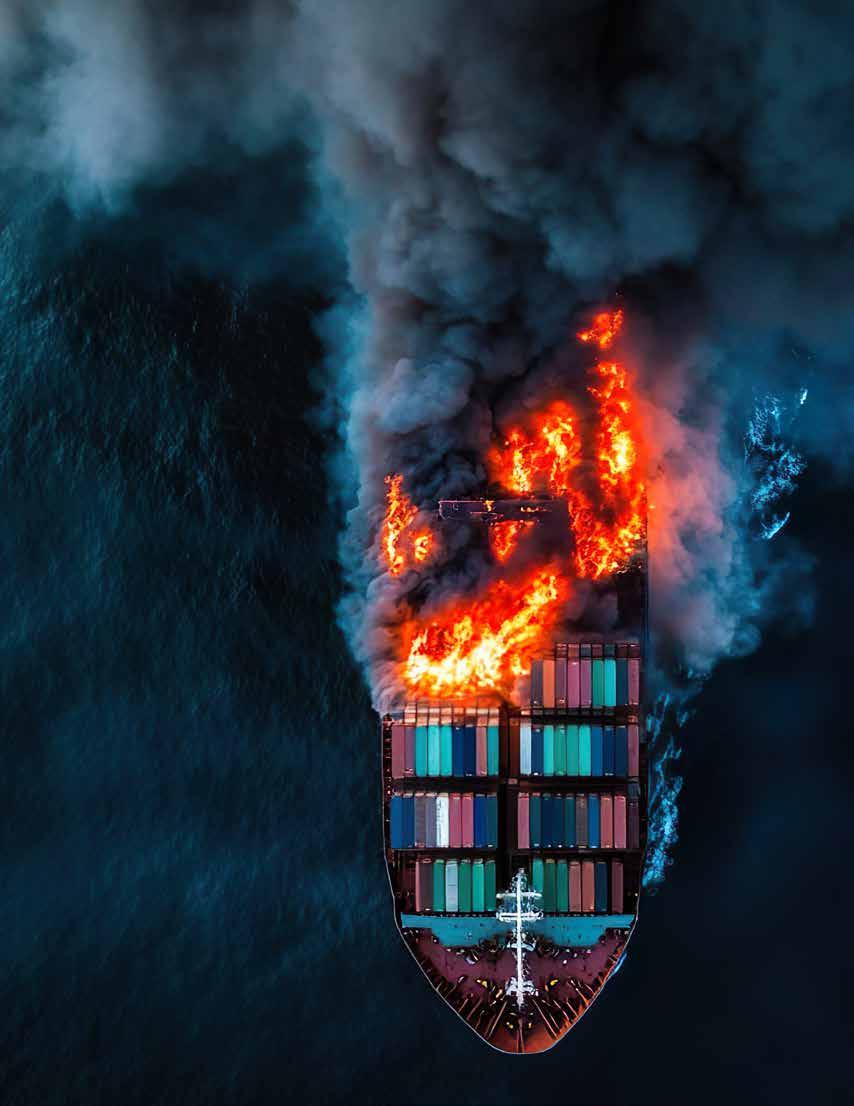
Container fires: a stitch in time


Tom Morgan , partner at HFW in London highlights why it is wise for ship owners, charterers, salvors and insurers to have a port of refuge procedure in place should an incident arise
Fire in container! Not words a shipowner or underwriter wants to hear from a vessel at sea. The risk of container ship fires is a problem that is however not going away.
We have seen a number of salient, recent examples of fires and explosions posing threats to vessels, their crew, their cargo and the environment. Some of these have resulted in total losses, almost all have incurred significant losses determined before the courts and appellate courts.
Once a salvage contract is in place and firefighting operations are underway, attention will turn to locating a port of refuge (POR). Since the advent of shipping, ships of all sizes and trades have needed to take immediate measures to save life, avoid pollution, or mitigate further loss by finding a POR.
But the advent of larger container ships, involving more parties, ever-more dangerous goods (DG) onboard and the logistical challenges this presents, can cause enormous headaches when considering PORs.
EARLY DECISIONS
Important decisions need be taken early. This requires prompt assessment of the immediate dangers being faced, the vessel’s location, her intended destination, POR options nearby, whether they can be reached safely and the attitude of any local authority on site.
“The advent of larger container ships, involving more parties, ever-more dangerous goods (DG) onboard and the logistical challenges this presents, can cause enormous headaches when considering PORs.”
Who makes the decision? Where a Lloyd’s Standard Form of Salvage Agreement (LOF) has been agreed, as is often the case on largescale container ship fires, The salvage master will have ultimate command of the casualty.
The shipowner will make the formal application for entry and their insurers of course have a very obvious interest. So too will the time charterer, whose name may be on the side of the vessel. There may also be alliance partners exposed to customers with cargo onboard. Flag and class must be consulted too.
The short answer is that the process should be a joint one. Where casualties are handled efficiently, it is because salvors, shipowners, charterers and their respective insurers work together. This includes setting up daily meetings and sharing documents, such as cargo and DG manifests, to assist operational decisions on safety. This approach is also
borne out in the LOF clauses which makes clear it is the responsibility of all owners of property to assist salvors in obtaining entry to the place of safety.
PERMISSION TO ENTER
The reality of calling at a POR varies significantly from port to port and the approach taken by the different stakeholders should reflect that.
Signatory coastal states are encouraged to follow International Maritime Organisation Resolution A.1184(33) on the Guidelines on Places of Refuge for Ships in Need of Assistance (the Guidelines), adopted on 6 December 2023.
These confirm that when a ship has suffered an incident, the best way of preventing damage or pollution is to stabilise the situation, including lightening cargo and bunkers and repairing the damage.
The Guidelines provide a common, operational framework on what is expected of the parties involved and encourage countries to welcome ships, especially when their own coastlines are at risk.
However, the Guidelines - and they are just that – also acknowledge that accepting a casualty can only be considered on a case-by-case basis and that states are under no obligation to receive vessels. They require only an “objective analysis” to be made.
In practice, issues of NIMBY-ism often play out. Despite many coastal states designating competent authorities with expertise and authority to take independent decisions, and declaring a willingness to assist casualties, this often fails to disseminate down to those signing-off on the port entry book, who might have their own reasons for saying no.
There are also examples of states, contrary to the Guidelines, pressuring neighbours to likewise refuse entry. Casualties can swiftly become the proverbial pariah of the seas. All the while, they remain at risk of a secondary fire and possible degrading cargo.
There are exceptions of course. Some regions are acutely aware of the potential revenue to local port economies in accepting a casualty. Ultimately, states will consider the risks versus the rewards.
Consideration should be given to identifying and approaching key decision makers within authorities, together with commercial parties or contractors with influence. There is no substitute for early face-to-face meetings to build trust. One thing is also certain: authorities do not like casualties arriving within territorial waters unannounced. It is therefore never too early to open dialogue with potential PORs.
SHORESIDE CONSIDERATIONS
The POR should also consider a plan for dealing with the cargo onboard. There may be hundreds of containers and cargoes above and below deck damaged as a result of fire spread or firefighting water. Some may now be recognisable only as scrap metal, burnt material or debris.
Cargo handling operations have become increasingly expensive in recent years and depending on the situation, are likely to exceed the cost of vessel repairs. Damaged cargo or debris cannot simply be dumped on a quayside and taken away to landfill. International conventions, local legislation and ESG considerations now rightly take centre stage. Damaged cargo must be removed, decontaminated, segregated, recycled and disposed of (if necessary) in a compliant manner.
Who is responsible for this? That depends on the contractual terms between the parties, although the position can often be unclear following a casualty. Either way, it is again important that all stakeholders - without prejudice to any rights of recourse - cooperate to negotiate a technically and commercially viable solution in good time.
There are obvious benefits to an integrated solution at a single POR. If that is not possible, parties will need to pay particular attention if exporting the damaged cargo elsewhere, in case it falls within the definition of waste and the wide reach of The Basel Convention on the Control of Transboundary Movements of Hazardous Wastes and their Disposal.
Hull and machinery (or loss of hire) underwriters might well consider that all shoreside decisions are for the P&I Club. In reality, where the removal, extraction and disposal of cargo is intrinsically linked to the vessel’s ability to carry out repairs and return to service, a constructive approach between insurers is key.
CONCLUSION
Where container ship fires remain a concern to the industry, shipowners and underwriters would be wise to have a POR procedure in place should such a scenario arise. In the event, the process will run much smoother by opening dialogue with authorities as early as possible, working with them when applying for entry, appointing a site team, considering an integrated ship/shoreside solution and ensuring constant dialogue between all stakeholders.
“Where casualties are handled efficiently, it is because salvors, shipowners, charterers and their respective insurers work together. This includes setting up daily meetings and sharing documents, such as cargo and DG manifests, to assist operational decisions on safety.”
Code changes to tackle charcoal fire risk

Jessica Ng , senior associate of Hawkins & Associates, explains the risks behind shipping charcoal and the IMDG Code’s efforts to mitigate them
Charcoal is a widely traded commodity that is commonly used in industrial and chemical processes (eg smelting, filtration) and for recreation purposes (eg cooking, smoking shisha). However, despite many cautionary warnings, fires involving containerised cargoes of charcoal
continue to occur.
According to incident records created by the Cargo Incident Notification System’s (CINS’) members, there were at least 68 fire incidents on board ships between January 2015 and December 2022 that were caused by charcoal.
It was found that most of the incidents arose from consignments that had been mis-declared and one of the
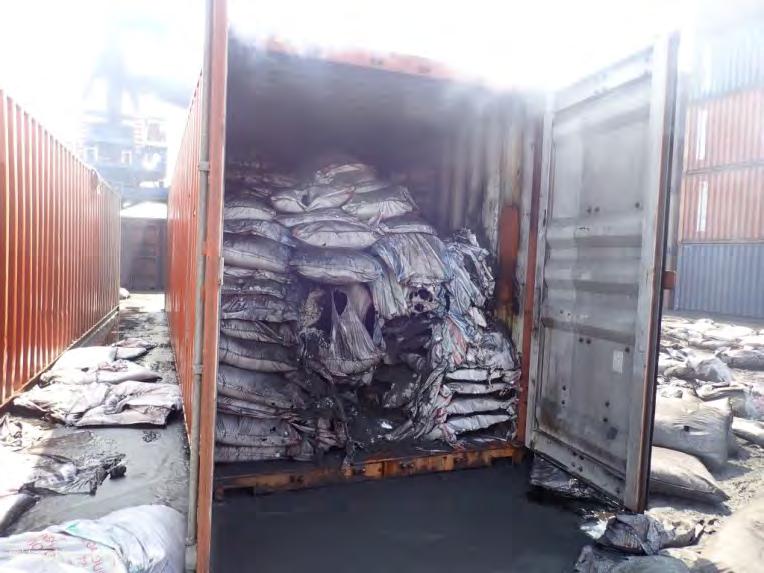
Bags of ‘Jute Stick Ash’ that were loaded into one of the containers that caught fire.
“According to incident records created by the Cargo Incident Notification System’s (CINS’) members, there were at least 68 fire incidents on board ships between January 2015 and December 2022 that were caused by charcoal. ”
main reasons for this is due to the wide range of trade names under which charcoal may be presented for shipment. Therefore, in an attempt to address the ongoing issue, the International Maritime Organisation recently updated its International Maritime Dangerous Goods (IMDG) Code, tightening the transport conditions for this high-risk cargo.
PROPERTIES OF CHARCOAL
Charcoal is produced by heating wood or other organic materials such as peat, coconut shell, and bark in an oxygenreduced environment, to remove all water and volatile constituents. It is essentially a black, porous material primarily composed of carbon, which is combustible. Common trade names that Hawkins has seen being used to disguise the nature of the cargo include, but are not limited to:
> Tablets for water pipes
> Hookah tablets
> Jute stick ash
> Wood charcoal
> Wooden products
> Just stick charcoal powders
RISKS WITH TRANSPORTING CHARCOAL
When charcoal is exposed to oxygen and water in the environment, the material can undergo oxidation and produce heat. If the charcoal is sufficiently active, the temperature of the charcoal will rise and eventually, as the temperature and oxidation rate increases, the material can ignite and result in a fire.
The duration it takes for the material to transition from self-heating to ignition varies and can range from hours to days or even weeks depending on the circumstances. Factors that can alter the self-heating process include:
> Wetting the cargo, as a result of inadequate protection from rain;
> Chemical treatment increasing its reactivity;
> Not cooling the cargo sufficiently before packing and shipment;
> Storing and packing the cargo closely together inside the container without adequate separation, which would allow heat generated by the cargo to dissipate; and
> High ambient temperature and/or prolonged exposure of cargo/container to external heat sources such as direct sunlight, hot machinery and/or heated fuel tanks.
CHANGES TO THE IMDG CODE
Given its properties, charcoal is classified as a Class 4.2 substance in the IMDG Code, which is one susceptible to spontaneous combustion. The IMDG Code groups charcoal/ carbon under two entries, as shown at the bottom of this page.
In the past, under Special Provision 925, UN 1361 and 1362 cargos were allowed to be shipped as non-dangerous cargo and were exempt from the provisions of the IMDG Code, as long as the cargo had satisfied the test for self-heating substances as reflected in the UN Manual of Tests and Criteria (N.4 test) and was accompanied by a certificate from a laboratory accredited by the competent authority.
However, with the ongoing concerns and increase in the frequency of fires involving charcoal products, the IMO has removed Special Provision 925 and inserted a new Special Provision 978; this states that the UN N.4 Test shall not be used to exempt carbon of animal or vegetable origin from the provisions of the Code. In other words, charcoal shall always be declared as a dangerous goods cargo and subject to the provisions of the IMDG Code.
Other key safety measures covered in Special Provision 978 include mandatory treatment before packing, mandatory temperature controls with charcoal not exceeding 40°C on packing day and specific stowage requirements mandating a 30cm gap between the cargo and the container top to allow
Properties and Observations
Black material originating from organic sources. Particularly includes carbon blacks of animal or vegetable origin, other non-activated carbon materials and charcoal produced from materials such as bone, bamboo, coconut shell, jute and wood. Liable to heat slowly and ignite spontaneously in air.
Activated porous black carbon materials not including charcoal (see UN 1361). May be in the form of powder, granules, pellets, fibres or felts. If chemically activated, may self-heat, and may ignite spontaneously in air.
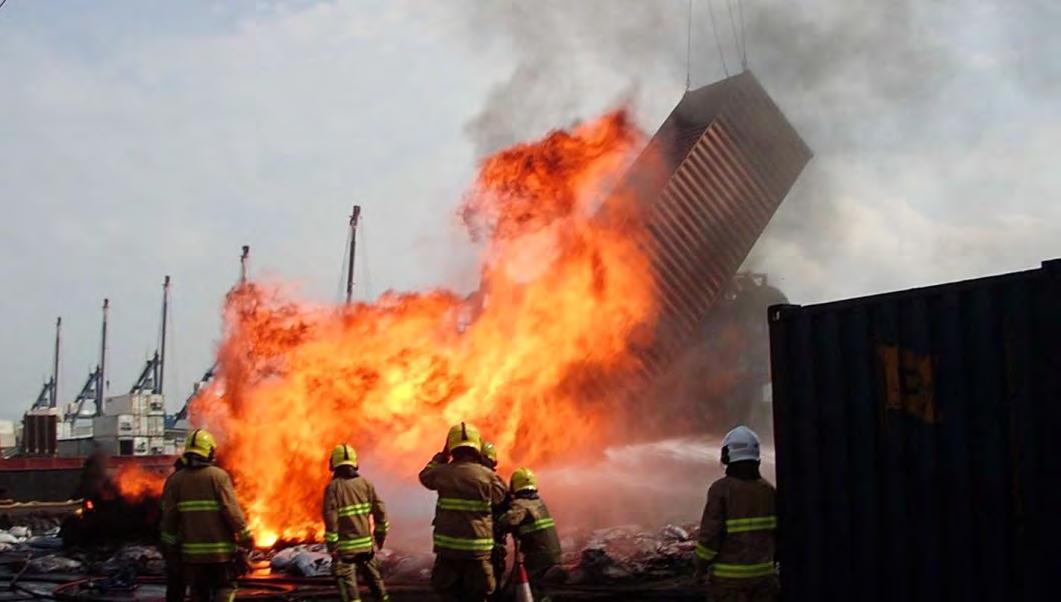
adequate ventilation and therefore allow for dissipation of any heat generating by self-heating. This new provision is reflected in the IMDG Code Edition 2024, which is voluntary from 1 January 2025, and mandatory from 1 January 2026.
MITIGATING THE RISK
Aside from properly declaring, packing and storing the cargo in accordance with the IMDG Code, shippers and carriers should also adopt the following practices to minimise the risk of a fire:
> Conduct a thorough vanning survey to ensure that the cargo is packed and secured in a proper manner;
> Confirm that the weathering report is available and credible and includes information such as the date of production, date of packing, type of packaging used and the average temperature of the material on the day of packing;
> Carry out a container inspection to confirm the container is in sound condition and that the markings and labelling are compliant with the Code; and,
> Take proactive steps to ensure the new safety measures for transporting charcoal are mandated before 2026.
SUMMARY
Shipping containerised cargoes of charcoal has been an ongoing concern in the shipping industry. Hopefully, with
new provisions in place the risk will be reduced. However, given the vast amount of trade names that disguise the nature of the cargo, it is possible that some of the cargo might not be described as charcoal and continue to be mis-declared. Furthermore, given that the new IMDG regulations will not be binding until 1 January 2026, until that time it is up to the carriers to take proactive steps to ensure the new safety measures for transporting charcoal are mandated before 2026.
“Given the vast amount of trade names that disguise the nature of the cargo, it is possible that some of the cargo might not be described as charcoal and continue to be mis-declared.”
The fireball created when a 40 foot container of charcoal powder was lifted at one end to empty the container.
In today’s marine insurance landscape, there are two leading forces among others, that are shaping the strategic decisions of shipowners and insurers alike: a softening market cycle and the rapid rise of managing general agents (MGAs).
While these trends are not new to the insurance world, they are accelerating change in the form of heightened competition, shifting risk appetites and innovative capacity routes.
This is prompting industry participants to rethink how they manage exposure, access underwriting expertise and secure appropriate cover in a market that has become more flexible, yet more fragmented.
SOFT CYCLE IN FULL SWING
Marine insurance, like most specialty classes, operates within a market cycle that fluctuates between hard and soft phases. A hard market is characterised by reduced capacity and higher premiums. A soft market, by contrast, is characterised by increased competition, lower premiums, and looser policy wordings.
Today, the marine sector finds itself clearly heading towards the latter.
Following a hard cycle that commenced seven years ago – triggered by sustained underwriting losses and capacity withdrawals – premium levels rose and underwriting disciplines tightened. Yet, this profitability attracted new entrants and returning insurers – which in turn increased capacity across the market. As a result, competition intensified and premiums began to fall. This return of abundant supply, is now placing downward pressure on rates, marking a classic soft market dynamic.
OPPORTUNITY AND RISK
For shipowners, the soft cycle presents both opportunity and risk. On one hand, they benefit from a broader array of options and more competitive pricing. On the other, a saturated market can lead to short-term pricing strategies that may not reflect the true risk environment. If premiums continue to drop below sustainable levels, some insurers could again withdraw capacity, potentially triggering another hardening phase.
Strategically, this creates a challenging environment for decision-makers. Navigating a soft cycle requires balancing cost efficiencies with long-term resilience – ensuring that coverage decisions made in a competitive market do not come at the expense of claims certainty or continuity of capacity when conditions inevitably shift.
THE GROWING ROLE OF MGAS
In parallel with the soft market, the industry has seen a noticeable surge in the prominence and diversity of MGAs. While MGAs have long been part of the insurance ecosystem, often acting as local underwriters for hard-to-reach, niche risks,
Riding the cycle

Davinia Melachrinos , partner, marine, McGill and Partners analyses the impact and role of MGAs on the insurance market cycle
they are now evolving in both scope and scale.
Traditionally, MGAs filled a gap by offering local expertise in areas where larger insurers lacked access. For example, an MGA in New Zealand might underwrite fishing vessels in remote regions, backed by capacity from London-based carriers unfamiliar with the local context. These MGAs offered agility, precision and a valuable connection to underserved risks.
However, today’s MGAs are increasingly based in global marine insurance hubs such as London. Many are no longer confined to narrow specialisms; some now underwrite broad portfolios comparable to traditional carriers. This shift has been driven by several factors, including:
• Underwriters seeking independence from rigid corporate structures and mass consolidation across the industry, particularly after job losses or restructures during prior hard cycles;
• Financial incentives, including commission and potential profit share arrangements; and,
• The possibility of building and selling a successful MGA operation to larger market players
From a capacity provider’s standpoint, MGAs offer a lean, outsourced underwriting model. If profitable, they are a valuable extension. If unprofitable, they can be easily disengaged – unlike in-house teams, which involve more complex restructuring.
For shipowners and brokers, the rise of MGAs has introduced new sources of capacity – often with faster decision-making and more tailored product design. However, it also presents new considerations around stability, claims handling and longevity. While many MGAs are run by experienced professionals, their long-term resilience can be harder to assess than that of established insurers.
“For shipowners and brokers, the
rise

STRATEGIC CONSIDERATIONS
While the soft market and the rise of MGAs are distinct developments, they both reflect a broader transformation in how marine risks are being underwritten, accessed and priced.
For shipowners, this creates a more complex placement environment – rich in opportunity but it requires more scrutiny. With premium rates under pressure, and capacity available from a wider range of sources, the challenge lies in distinguishing short-term cost savings from long-term reliability.
Brokers, too, play an increasingly strategic role. Matching shipowners with the right capacity – whether via traditional carriers or emerging MGAs – demands a nuanced understanding of both the current market cycle and the specific risk appetite of underwriters.
In this environment, the broker is not just a conduit for placement, but a key advisor in helping clients make confident, well-informed decisions amid shifting market conditions.
EXTERNAL UNCERTAINTY WILDCARD
Layered on top of these internal market dynamics is a persistent backdrop of geopolitical and environmental uncertainty. While not directly responsible for the current soft market or the growth of MGAs, these external forces influence how both underwriters and insureds think about risk. High-risk regions like the Red Sea or Black Sea have seen war premiums surge and real-time intelligence has become a critical underwriting tool. Geopolitical volatility, from Middle Eastern tensions to a rise of instability risk in East
of
MGAs has introduced new sources of capacity – often with faster decision-making and more tailored product design. However, it also presents new considerations around stability, claims handling and longevity.”
Asia, continues to shape marine insurance risk profiles in real time.
Emerging challenges around alternative fuels also pose long-term underwriting questions. As the shipping industry transitions away from traditional fuels, insurers are watching closely to assess the potential impact on machinery, safety and overall risk, often with incomplete data and limited precedent.
These uncertainties reinforce the importance of long-term thinking, even amid a soft market. While pricing may be favourable now and, despite the wider and easier access to data, risk is becoming harder to model – and that in turn, could affect both underwriting appetite and the availability of reliable specialist capacity in the future.
LOOKING AHEAD
The marine insurance market is in flux. The current softening cycle will not last and is thought to have a shorter timespan than previous soft market cycles. So, the sustainability of newer capacity models will continue to be tested through time.
While having more insurance options and customised policies is a plus for shipowners, it also creates a challenge. Shipowners must carefully evaluate each provider not just on cost, but on their proven ability to deliver when it counts.
The real question for the months ahead is not just where capacity comes from, but how sustainable that capacity will be when the market inevitably turns again.
Therefore, for brokers and underwriters to effectively support their clients in navigating the next phase of the cycle, a commitment to increased transparency and stronger collaboration, by all parties, will be essential.
Rising tide of piracy in Asian waters

Captain Deha Aydin , maritime consultant at law and consulting firm Esenyel partners, says that the recent rise in piracy incidents in Asian waters should provide a wake-up call for the shipping industry
The first half of 2025 was marked by an alarming resurgence of piracy and armed robbery in Asian waters. According to official reports, 95 incidents were recorded between January and June, an 83% increase compared to the 52 incidents reported during the same period in 2024.
While these figures may appear as just numbers in a report, they signify real and growing threats to the safety of vessels, the welfare of seafarers and the security of maritime operations in one of the world’s busiest and most vital trading corridors.
Unsurprisingly, the Straits of Malacca and Singapore (SOMS) remain the epicenter of these incidents, accounting for nearly 84% of the total cases recorded in 2025 so far.
This narrow but strategically crucial waterway serves as a passage for approximately one-third of the world’s shipping trade, making it not only one of the busiest but also one of the most vulnerable maritime routes globally.
While piracy and armed robbery are not new to SOMS, the magnitude and pace of the increase in incidents have caught the attention of shipowners, security analysts and regulators alike.
An important pattern observed in these incidents is their occurrence while vessels are underway, rather than at anchor. This marks a shift from traditional assumptions where vessels at rest were thought to be more vulnerable due to reduced vigilance.
The fact that most incidents now happen during transit
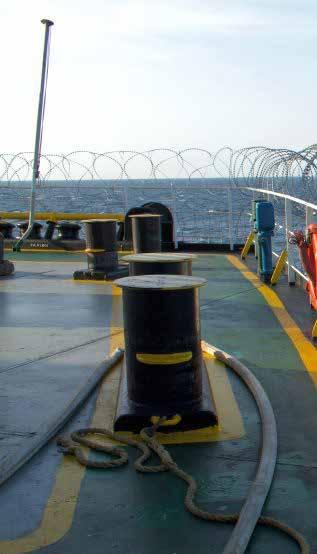
suggests that attackers are adapting to traditional defensive routines and finding weaknesses even in motion.
BULK CARRIERS TARGETED
Moreover, the most targeted vessels have been bulk carriers, which often operate with minimal crew and carry highvalue or easily resalable cargo. Many of the incidents were reportedly opportunistic thefts; however, a concerning proportion also involved armed assailants, use of force and intimidation of crew members, adding a grave dimension to what some still mistakenly view as “petty crime”.
The dramatic rise in incidents serves as a stark reminder that conventional security tools like automatic identification systems (AIS), while helpful for monitoring and tracking, are insufficient as standalone solutions to counter modern piracy.
AIS was never designed as a security tool; it was meant to improve maritime safety and collision avoidance. In practice, pirates have become adept at exploiting predictable ship behaviors and even using AIS signals against the vessels they target.
For instance, attackers can track vessels broadcasting their position, predict their next move and intercept them

when they are most vulnerable — often during slow transit through chokepoints.
Another weakness lies in the over-reliance on routine watchkeeping practices and minimal onboard security personnel. In many cases, crews are simply not prepared to respond effectively to a sudden and violent intrusion.
The situation calls for shipping companies to move beyond basic monitoring and embrace multi-layered vessel security strategies. Several proactive measures have already been adopted by forward-thinking fleet managers and designated security officers, but more could and should be done.
One such measure gaining popularity is the discreet ship security alert system (SSAS). Unlike AIS, SSAS is designed specifically as a silent distress signal. When activated, it notifies designated authorities or security service providers without alerting onboard assailants. This ensures that help can be dispatched while minimizing the risk of escalation or retaliation against the crew.
OTHER MEASURES INCLUDE:
> Crew training and drills tailored to address piracy scenarios, ensuring the crew knows how to respond without

“The most targeted vessels have been bulk carriers, which often operate with minimal crew and carry high-value or easily resalable cargo. Many of the incidents were reportedly opportunistic thefts; however, a concerning proportion also involved armed assailants, use of force and intimidation of crew members, adding a grave dimension to what some still mistakenly view as “petty crime”.
endangering themselves or the vessel;
> Use of physical deterrents, such as razor wire, enhanced lighting and water cannons, which, while not foolproof, can delay or discourage unauthorised boarding;
> Employment of privately contracted armed security personnel (PCASP) in high-risk areas, though their presence remains controversial and is not always permitted by local regulations; and,
> Improved intelligence sharing among vessels, fleet operators and regional information centers, such as the ReCAAP Information Sharing Centre.
The rising incidents have underscored the importance of regional cooperation. Organisations like ReCAAP (Regional Cooperation Agreement on Combating Piracy and Armed Robbery against Ships in Asia) play a vital role in collecting, verifying and disseminating information about piracy incidents. Their reports help shipowners and masters assess risks and plan voyages accordingly.
However, regional governments must also take stronger measures. Enhanced maritime patrols, better coordination between neighboring states and stricter prosecution of captured pirates can all contribute to deterring further attacks.
The SOMS, in particular, being a multi-jurisdictional waterway, requires seamless cooperation between Singapore, Malaysia, and Indonesia - something that has historically been challenging but increasingly necessary.
SEVERE TRAUMA
While the economic cost of piracy - in terms of stolen cargo, ransoms, and insurance premiums - is significant, the human cost often goes underreported. Seafarers exposed to piracy incidents can experience severe psychological trauma, including anxiety, PTSD and a reluctance to return to sea.
Shipping companies must, therefore, prioritise the welfare of their crews, not only during incidents but also after, providing counseling and support for those affected. A welltrained, alert and motivated crew is perhaps the most critical asset in preventing and mitigating piracy threats.
To address this growing menace comprehensively, shipping companies and regional stakeholders should consider the following actions:
> Risk assessment and voyage planning - Incorporate up-todate piracy risk assessments into voyage planning, especially for transits through SOMS and other hotspots.
> Technology beyond AIS - Invest in technologies like SSAS, CCTV surveillance, and electronic perimeter alarms, which supplement rather than replace human vigilance.
> Crew training - Ensure that all crew members are familiar with the ship’s anti-piracy procedures and have practiced drills under realistic scenarios.
> Physical deterrents - Equip vessels with reasonable physical barriers and deterrents, while ensuring compliance with safety and environmental standards.
> Engagement with regional partners - Participate actively in information-sharing networks, report all incidents promptly, and collaborate with naval and coastguard forces.
> Psychological support for crew - Establish protocols for post-incident care, including psychological counseling, to mitigate long-term effects on crew welfare.
WAKE-UP CALL
The sharp rise in piracy and armed robbery incidents in the first half of 2025 should serve as a wake-up call for the global shipping industry. The challenges are evolving and so must the strategies to confront them.
By moving beyond outdated, single-layered approaches and adopting a comprehensive, multi-faceted security strategy - one that combines technology, crew preparedness, physical deterrents and regional cooperation - the industry can safeguard its vessels and crews more effectively.
Most importantly, the shipping community must acknowledge that the fight against piracy is not just about protecting cargo and bottom lines but about preserving human lives and ensuring that seafarers can carry out their duties with confidence and dignity.
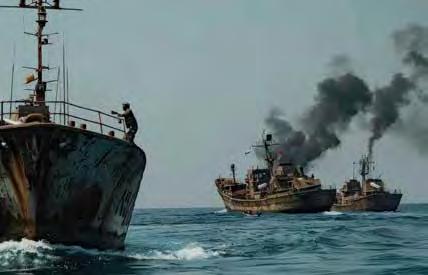
“The fact that most incidents now happen during transit suggests that attackers are adapting to traditional defensive routines and finding weaknesses even in motion.”
QBE’s US Marine strategy for global reach and resilience
The marine industry is navigating unprecedented change. As global trade and logistics grow more complex, marine insurers must adapt to evolving risks and shifting regulation
QBE is meeting this challenge head on. Through strategic investments, specialist expertise and an expanded portfolio of marine products, QBE is delivering innovative solutions that strengthen resilience and support customers across international markets and marine insurance.
US MARINE: A STRATEGIC PRIORITY
Founded in 1960, Burnett & Company, Inc. operated as an independent wholesaler until December 2008, when it became a wholly owned subsidiary of QBE Insurance Group, aligned with QBE’s International Markets (QBEIM) division. This acquisition included an existing marine portfolio alongside its established energy operations.
Building on this foundation, QBEIM made a major investment in the US marine market in 2022, with the vision of offering a comprehensive suite of marine solutions.
Today, QBEIM underwrites a wide range of marine lines including cargo, marine liabilities, hull and machinery and inland marine.
With Houston as its hub, and underwriting and claims specialists positioned across the country, QBEIM combines local insight with global expertise to deliver responsive underwriting and claims service for even the most complex marine risks.
With a forward-looking approach, QBEIM has recently strengthened its marine offering through the following:
MULTINATIONAL CARGO: SUPPORTING GLOBAL GROWTH
Under the leadership of Jake Vardon-Prince, QBEIM is enhancing its cargo offering with multinational programmes designed to meet customers’ local policy needs worldwide. Leveraging QBEIM’s extensive global network and on-the-ground expertise, these programmes deliver coordinated and responsive service for both new and existing customers.
Working closely with key retail partners, QBEIM is targeting customers with 1-10 local policies, offering capacity of up to $50m, including coverage for natural catastrophe perils. Policies can be written on both admitted and non-admitted paper, with flexible combinations of transit-only and stock throughput cover to meet diverse operational requirements.
INLAND MARINE
In late 2024, Sharon Primerano joined QBEIM to spearhead its entry into the North American inland marine market. Her growing team is steadily building momentum in this expansive marketplace. With a clear focus on contractors’ equipment alongside transportation and logistics risks, QBEIM’s inland marine portfolio offers the choice to write on both admitted and non-admitted security, ensuring tailored solutions backed by best-in-class service.
MARINE LIABILITY AND HULL AND MACHINERY PACKAGES
QBEIM is recognised for its ability to design bespoke package solutions for marine contractors and vessel operators. A recent example includes consolidating marine general liability, maritime employers liability and hull and machinery policies into a single comprehensive coverage package for an offshore wind contractor. This solved a placement challenge that brokers had struggled to align.
TALENT AND TEAMWORK
At QBEIM, people are at the heart of our success with their talent and expertise recognised as key differentiators. In the US, the team combines a diverse range of experience with a shared commitment to excellence, driving the continued growth of our marine portfolio. Recruitment remains a key priority, alongside investing in professional development and internal promotion to build the next generation of industry leaders.
MARKET CONDITIONS AND UNDERWRITING DISCIPLINE
The marine rate environment remains strong and stable. Given the specialised nature of the class, rates experience less volatility across market cycles. QBEIM is committed to disciplined underwriting, ensuring consistency and reliability for customers throughout every stage of the cycle.
UNIFIED GLOBAL VISION
QBEIM’s marine strategy unites the scale of a global insurer with a deep local underwriting and claims expertise. This integrated approach enables us to support a diverse customer base, from regional operators to international logistics firms, with precision, agility and confidence.
As the marine insurance landscape continues to evolve, QBEIM’s focus on innovation, talent development and underwriting excellence ensures it remains a trusted partner in navigating complex risks. Whether delivering comprehensive inland marine solutions or coordinating multinational cargo programmes, QBE provides marine insurance solutions that are global in scope and locally responsive.
Other key safety measures covered in Special Provision 978 include mandatory treatment before packing, mandatory temperature controls with charcoal not exceeding 40°C on packing day and specific stowage requirements mandating a 30cm gap between the cargo and the container top to allow adequate ventilation, and therefore allow for dissipation of any heat generating by self-heating. This new provision is reflected in the IMDG Code Edition 2024, which is voluntary from 1 January 2025, and mandatory from 1 January 2026.
MITIGATING THE RISK
Aside from properly declaring, packing and storing the cargo in accordance with the IMDG Code, shippers and carriers should also adopt the following practices to minimise the risk of a fire:
> Conduct a thorough vanning survey to ensure that the cargo is packed and secured in a proper manner;
> Confirm that the Weathering Report is available and credible and includes information such as the date of production, date of packing, type of packaging used and the average temperature of the material on the day of packing;
> Carry out a container inspection to confirm the container is in sound condition and that the markings and labelling are compliant with the Code; and,
> Take proactive steps to ensure the new safety measures for transporting charcoal are mandated before 2026
SUMMARY
Shipping containerised cargoes of charcoal has been an ongoing concern in the shipping industry. Hopefully, with new provisions in place the risk will be reduced. However, given the vast amount of trade names that disguise the nature of the cargo, it is possible that some of the cargo might not be described as charcoal and continue to be misdeclared. Furthermore, given that the new IMDG regulations will not be binding until 1 January 2026, until that time it is up to the carriers to take proactive steps to ensure the new safety measures for transporting charcoal are mandated before 2026.
